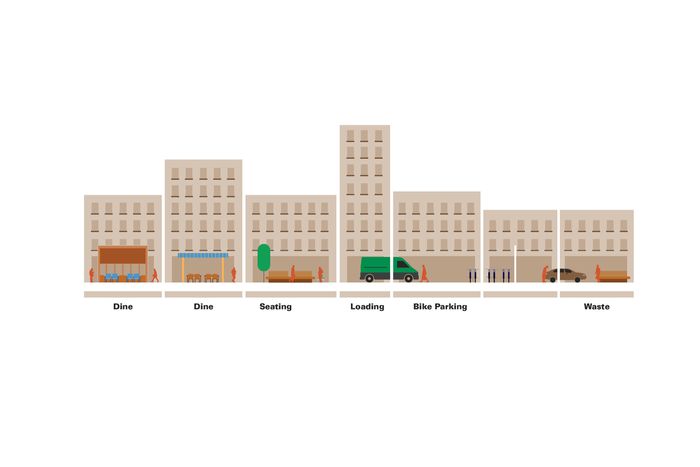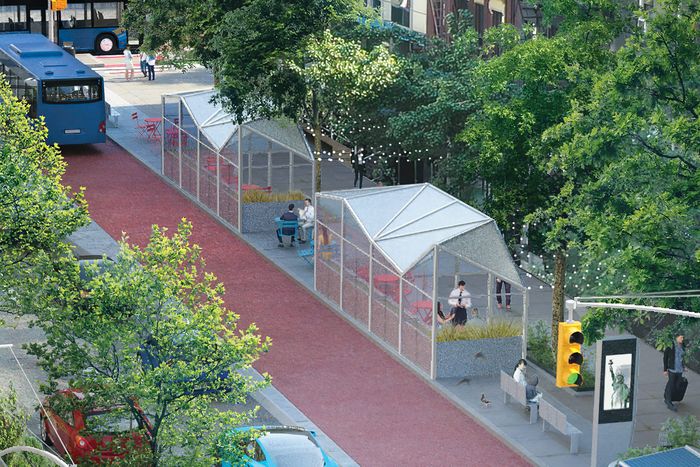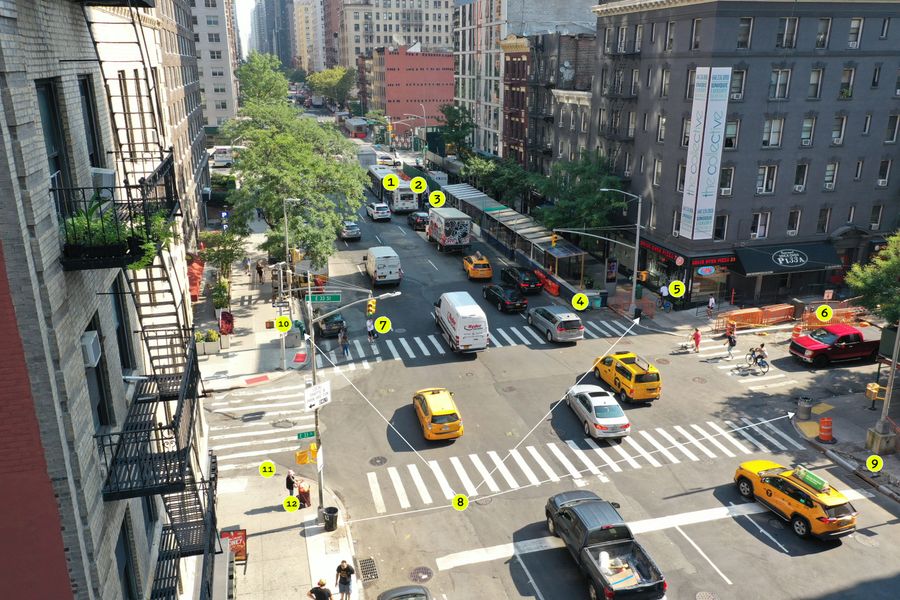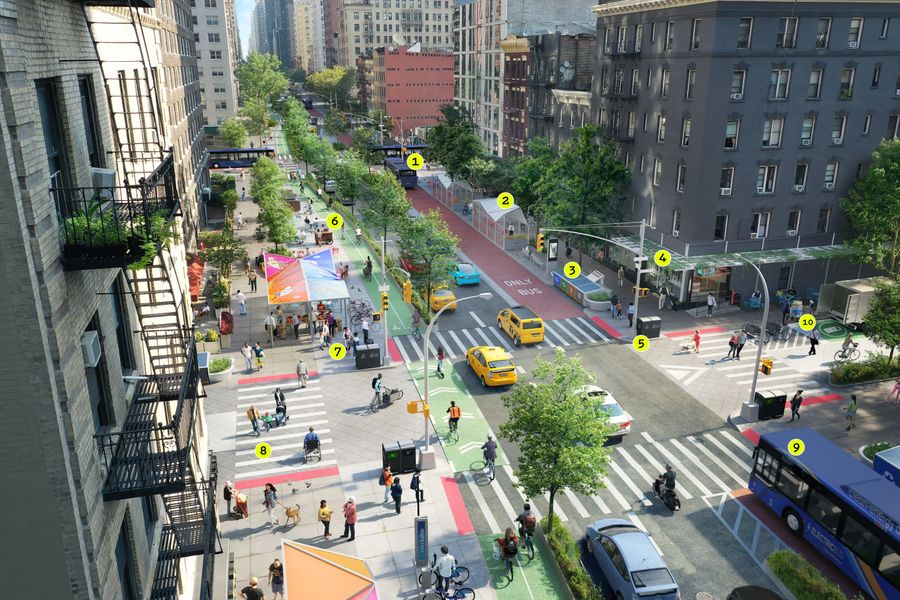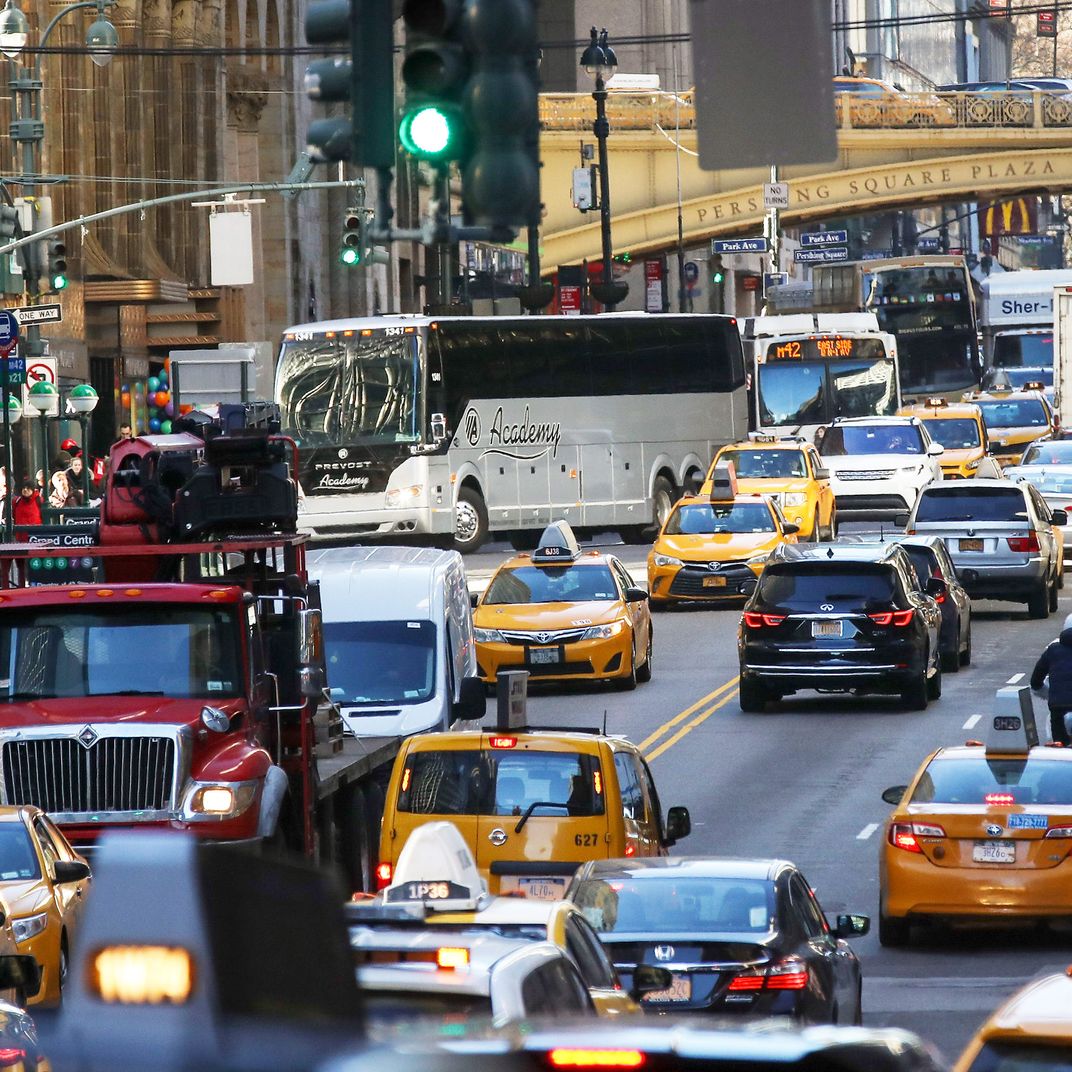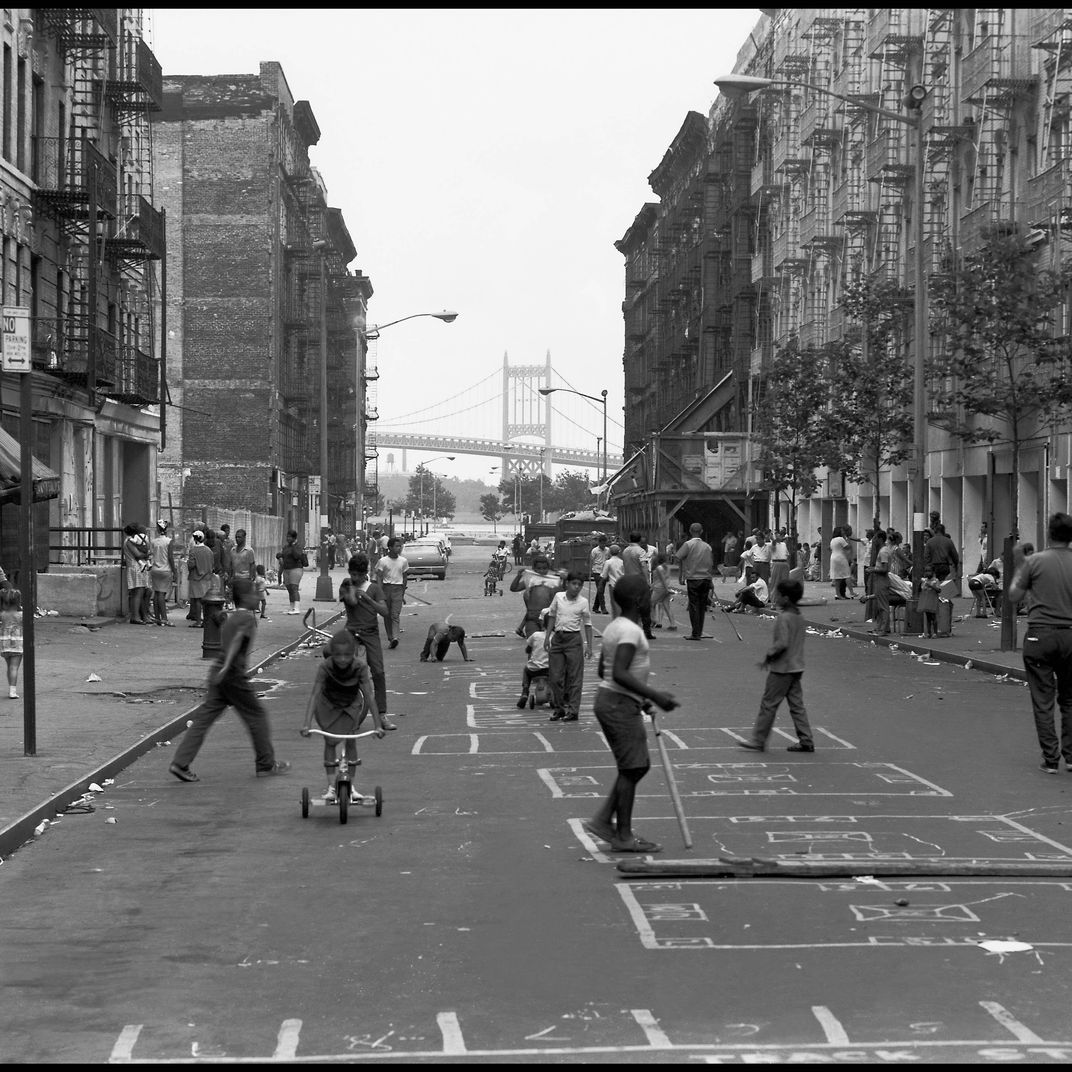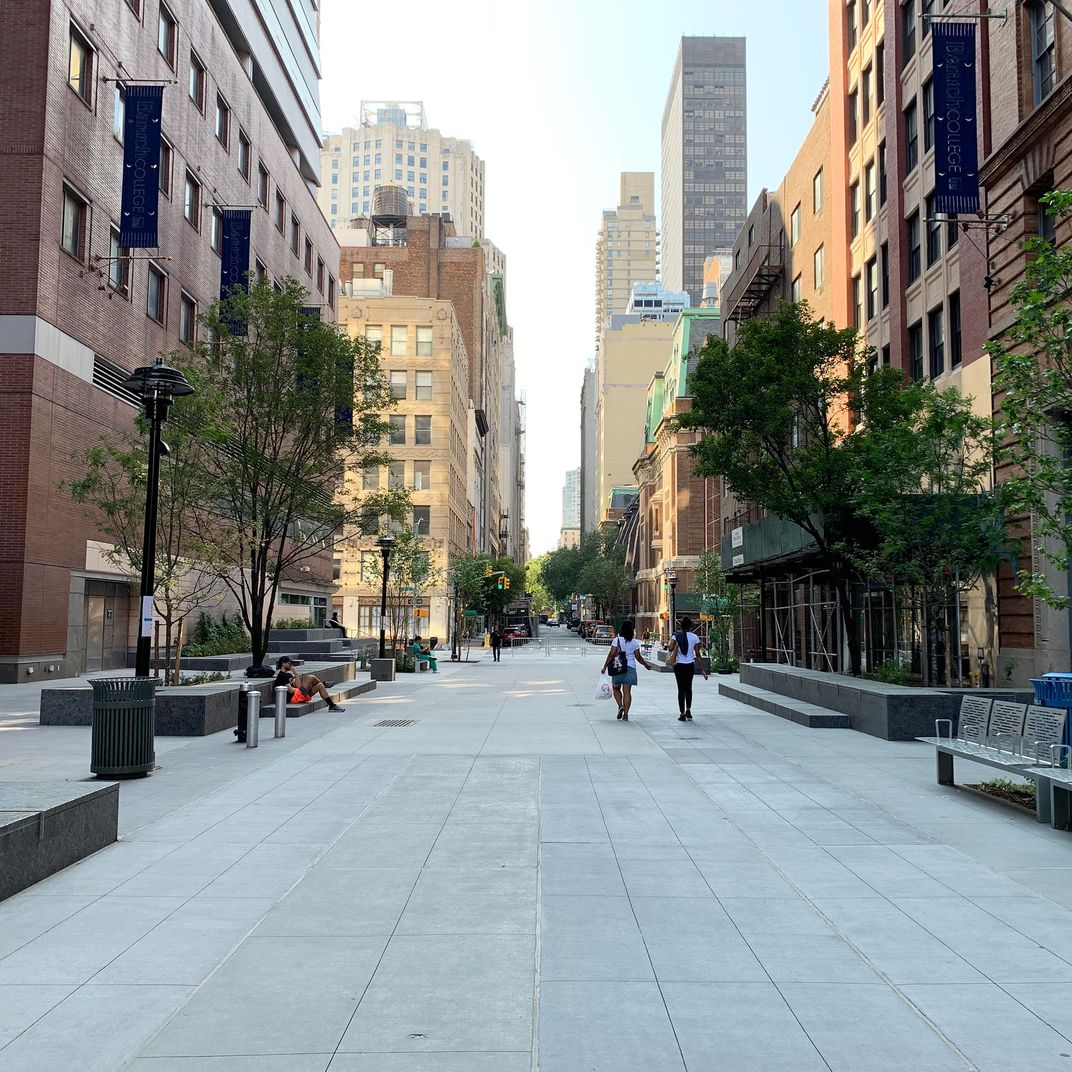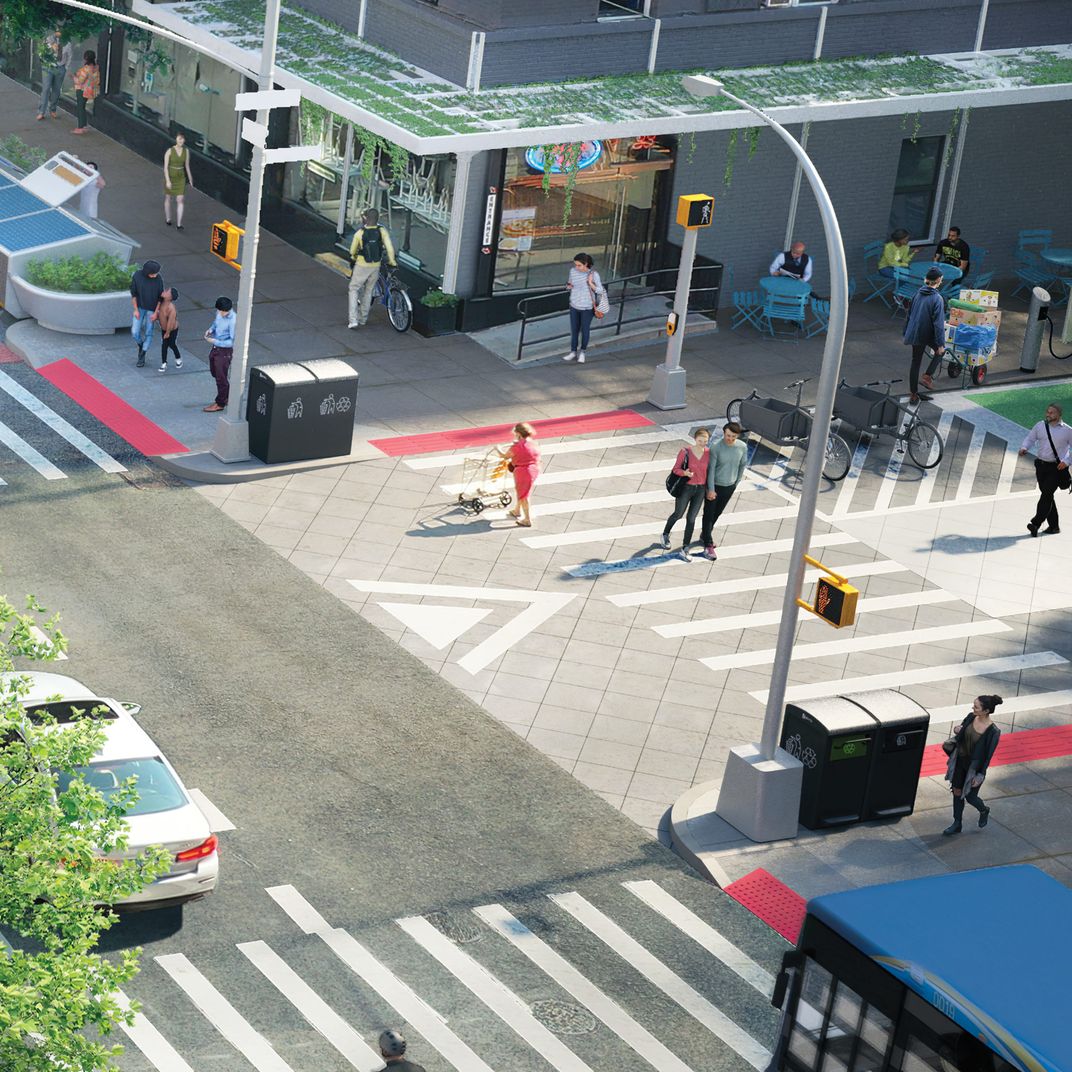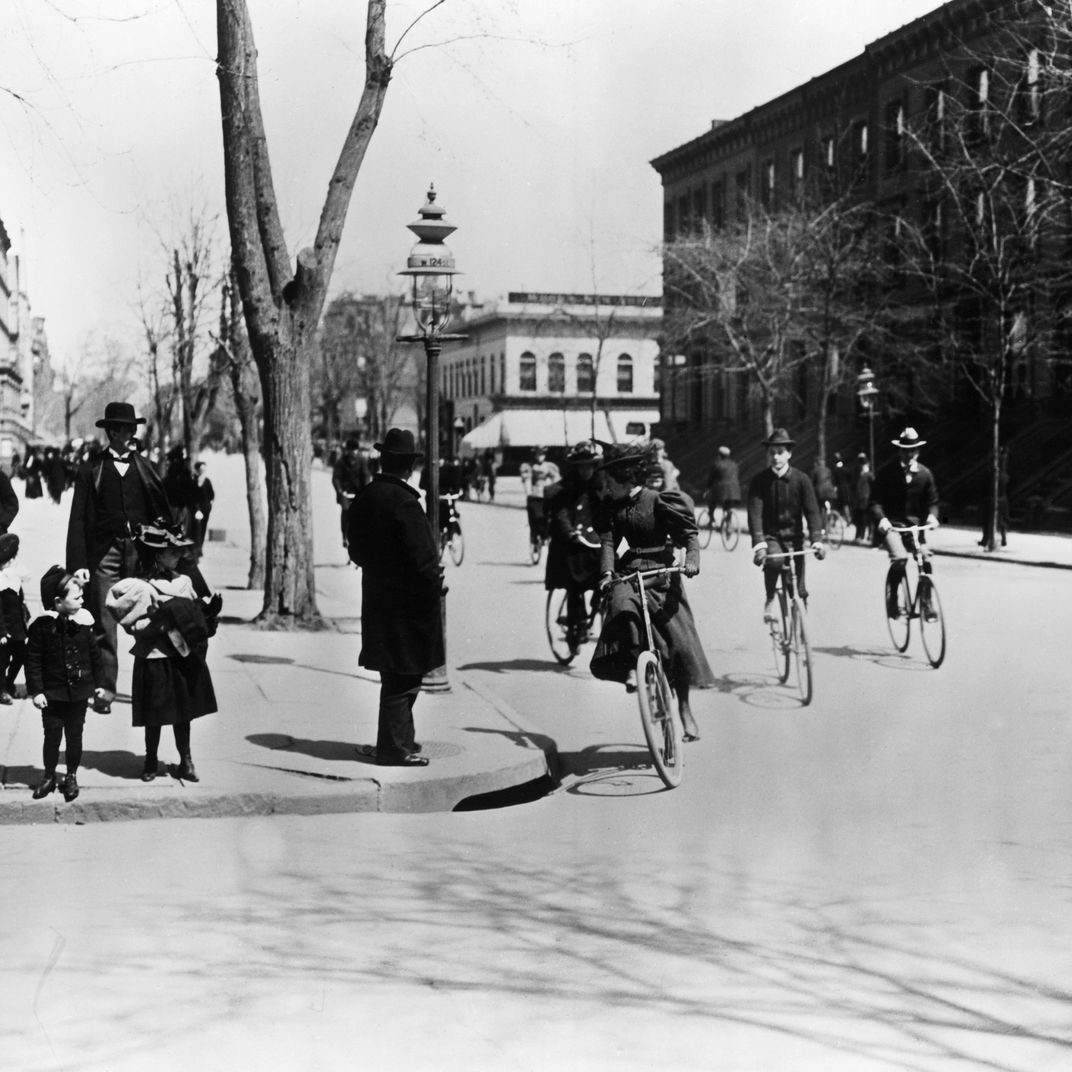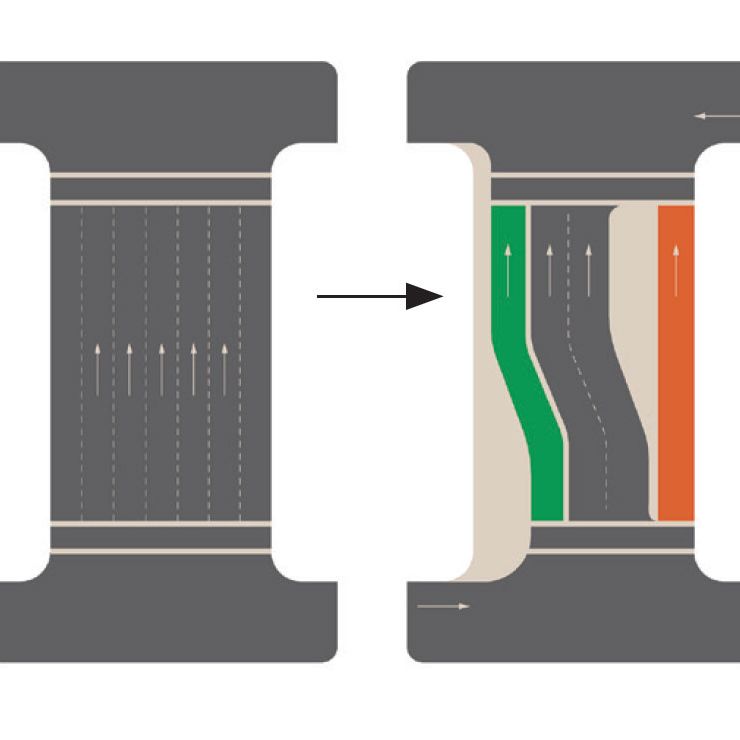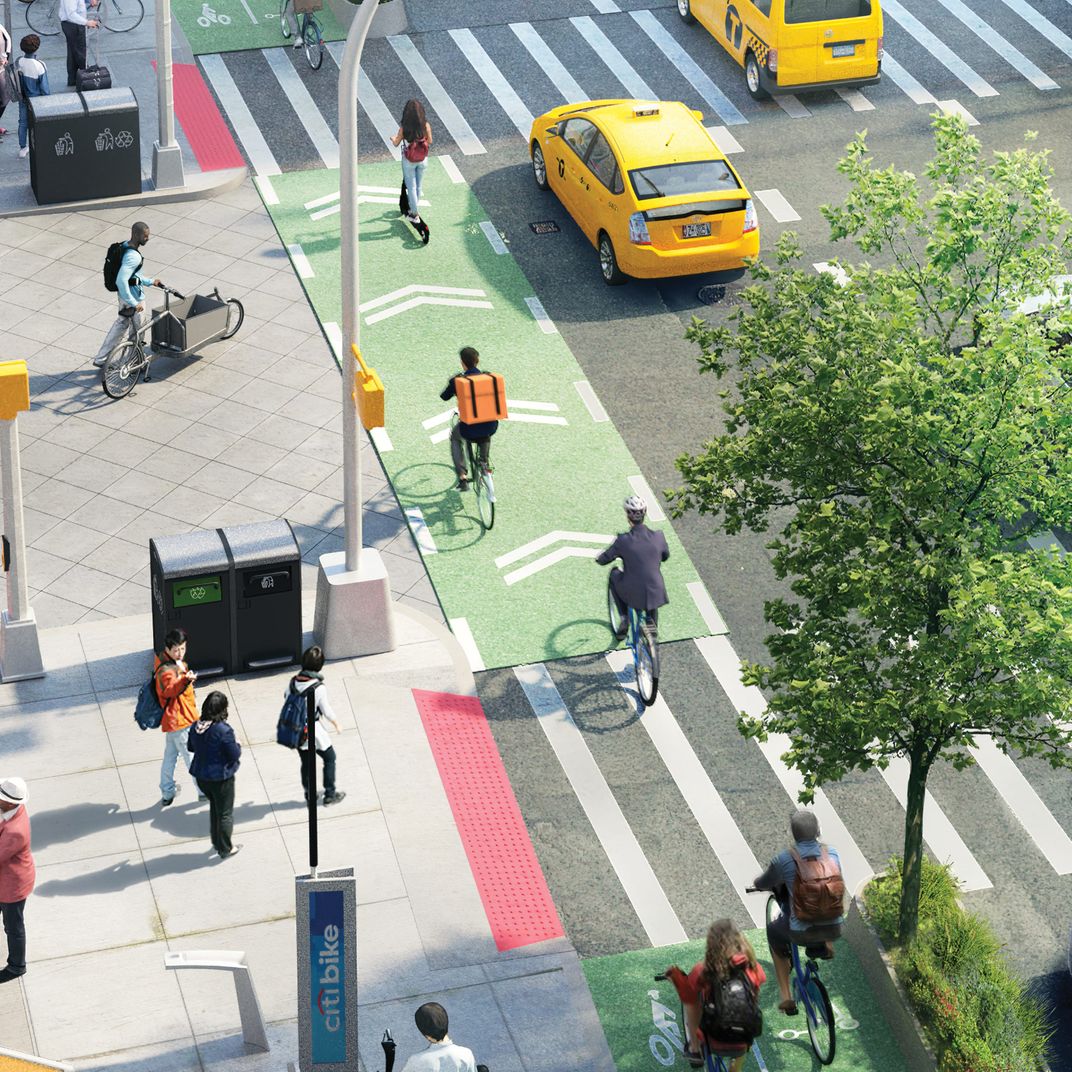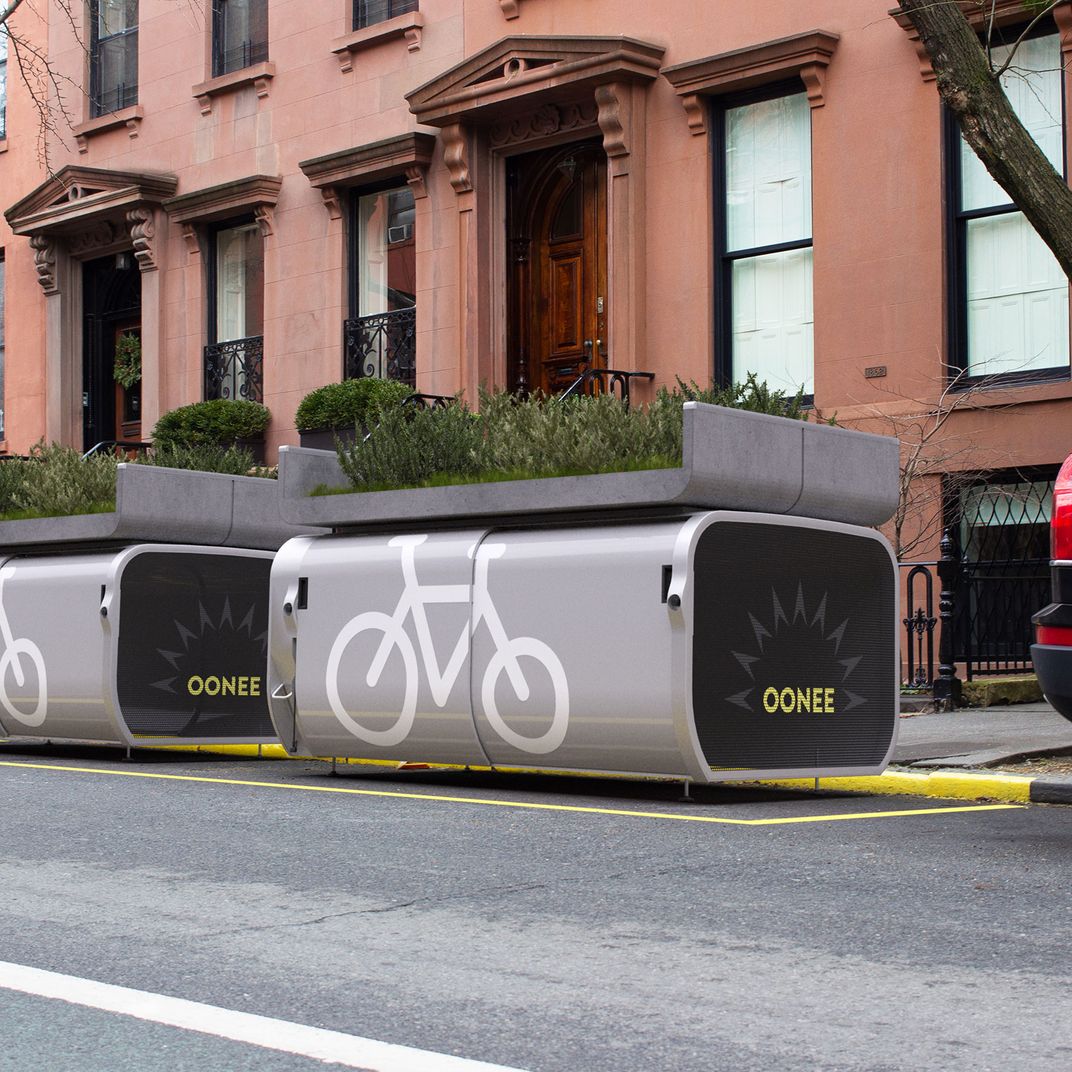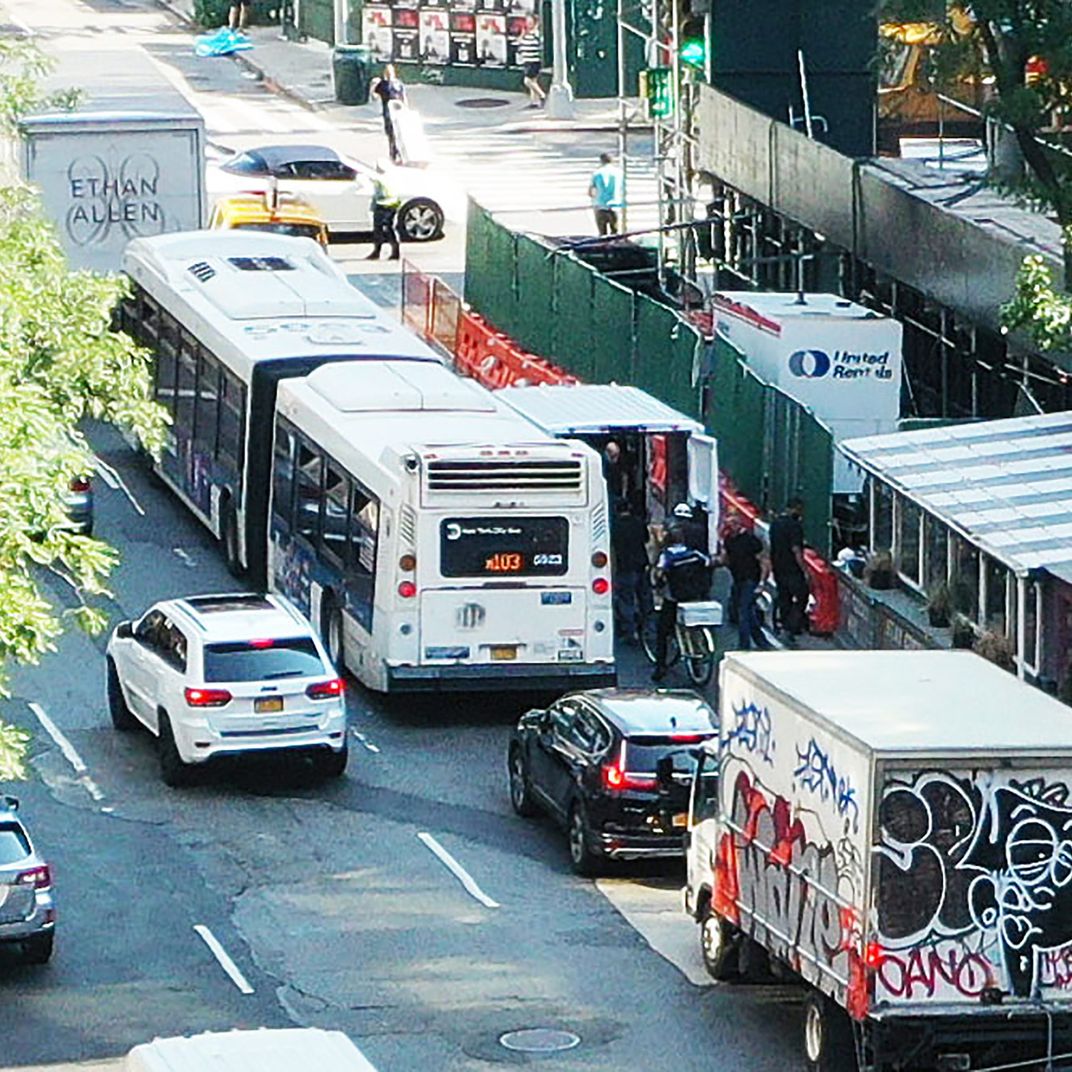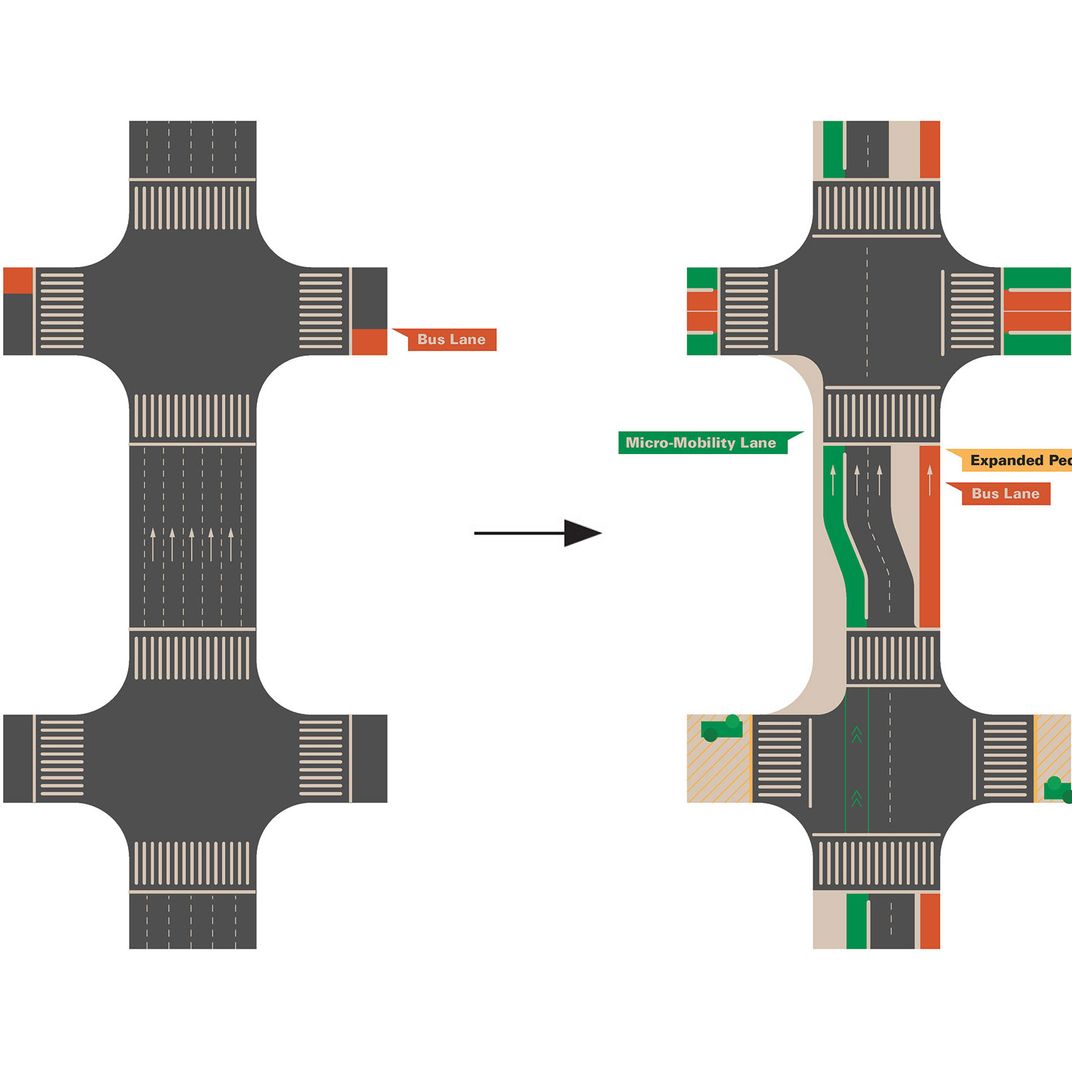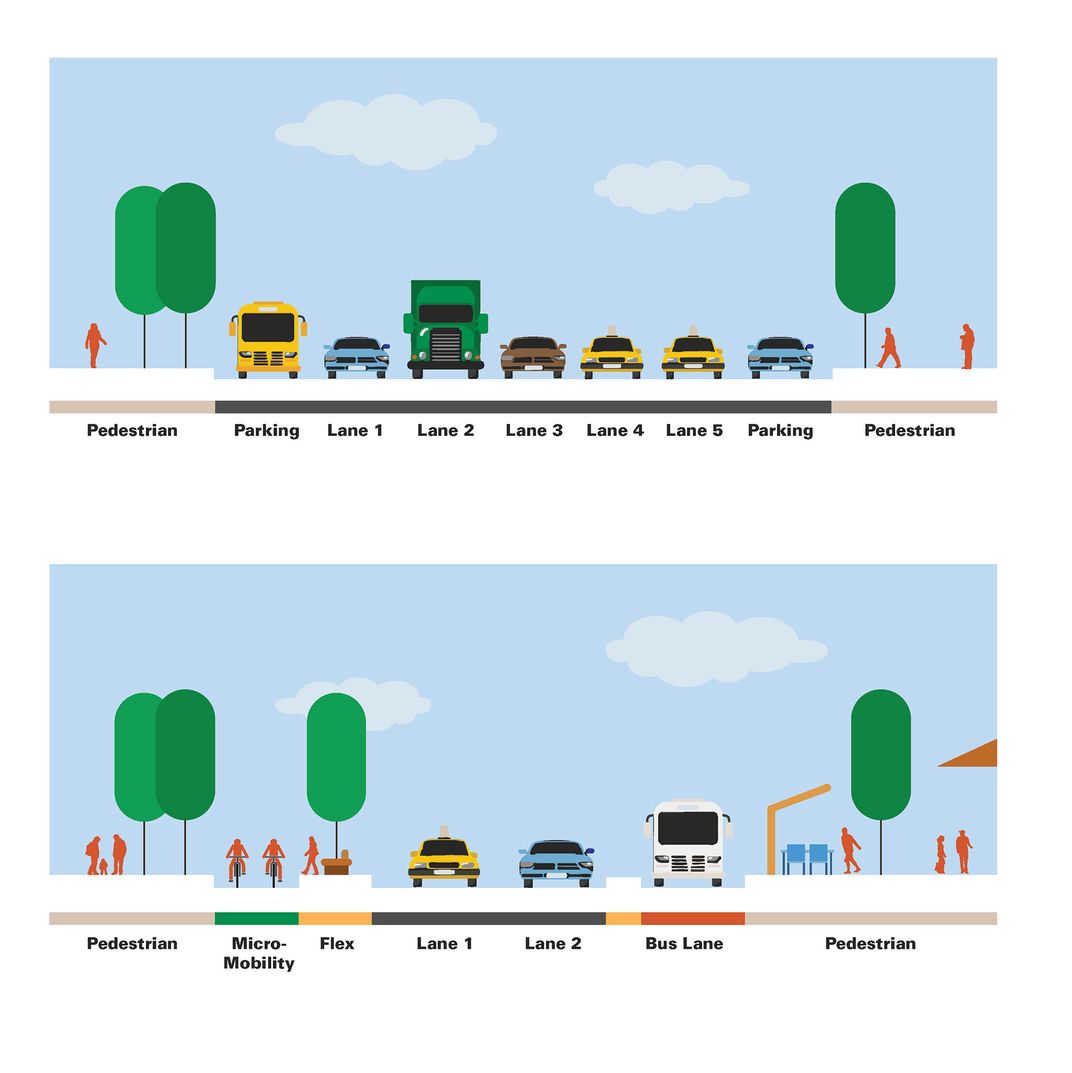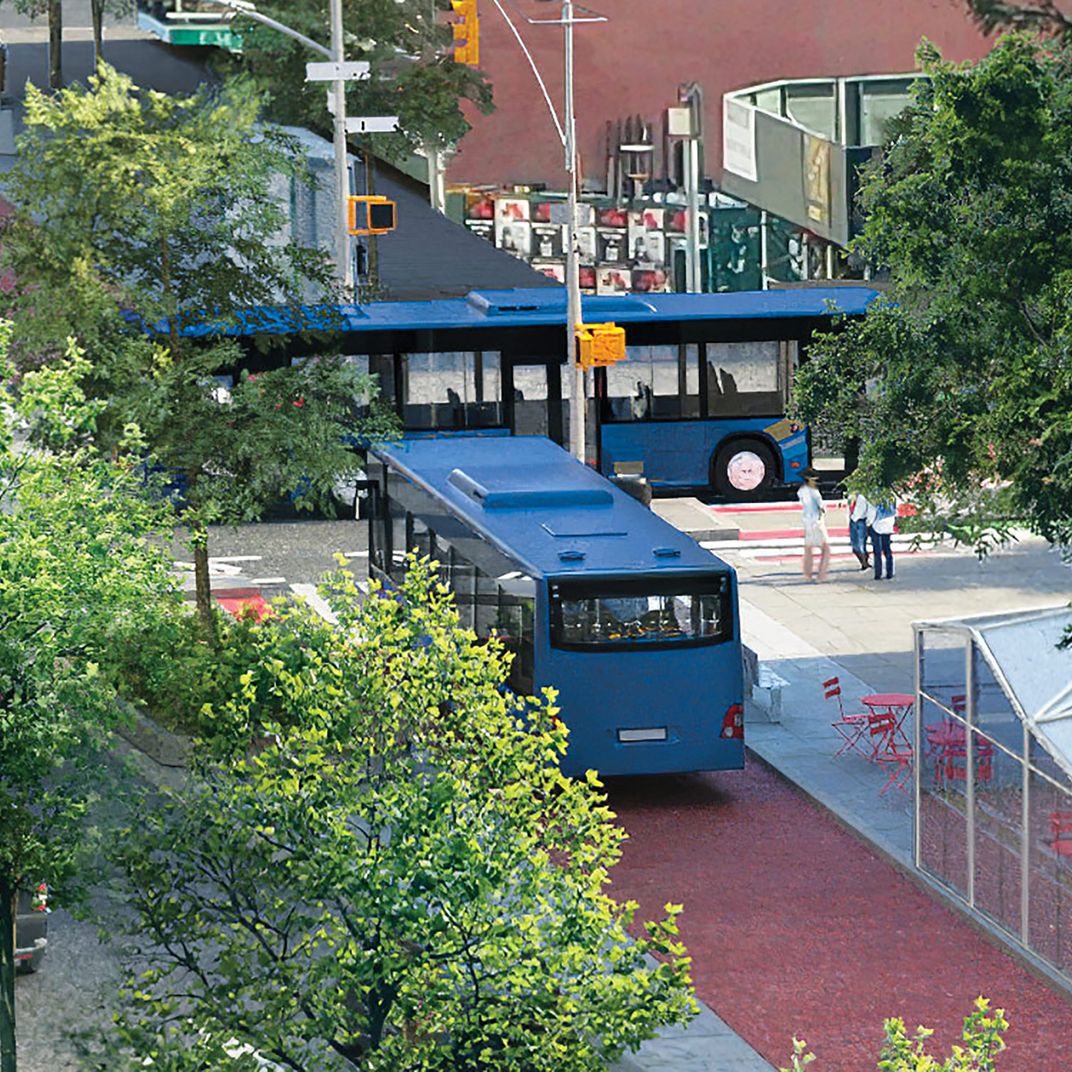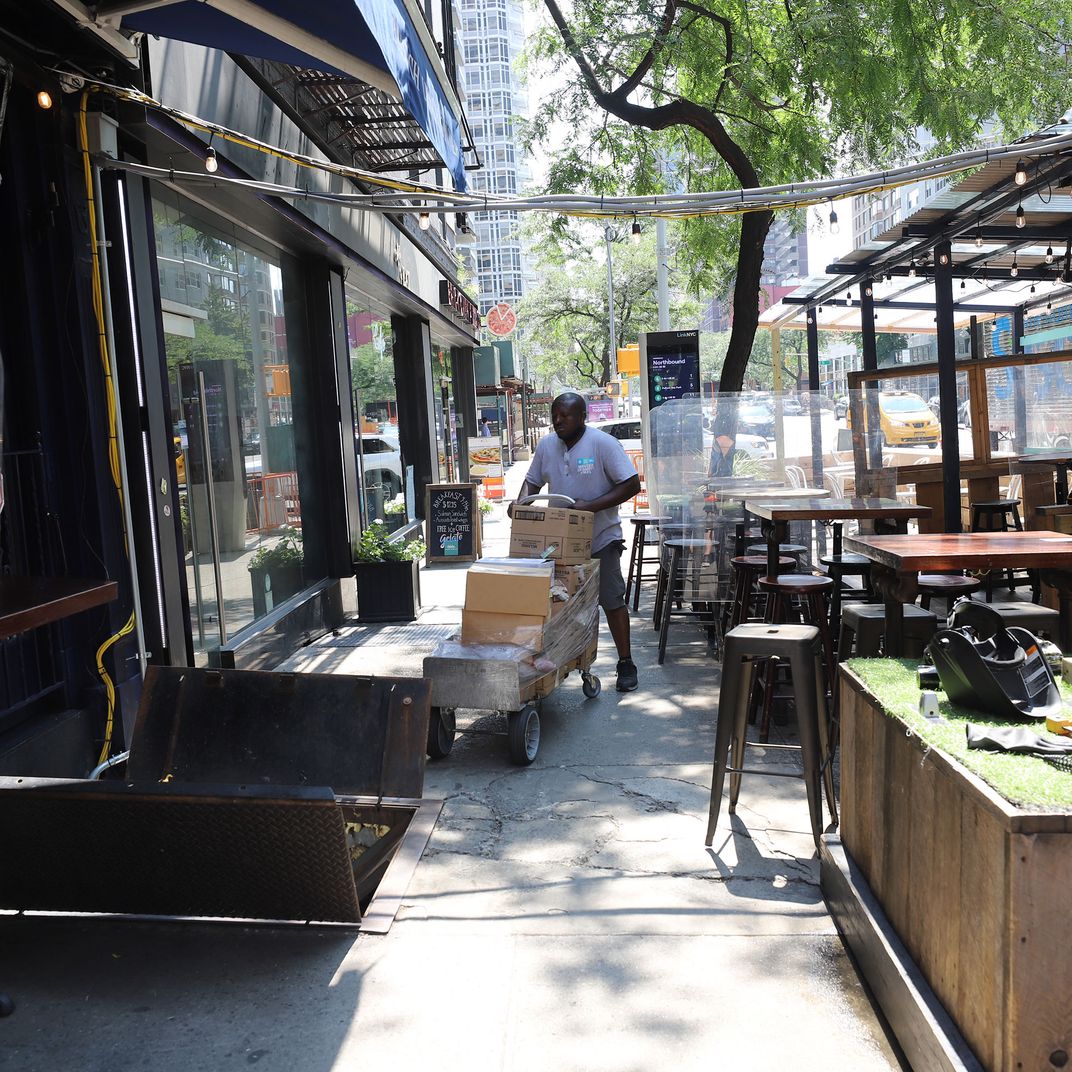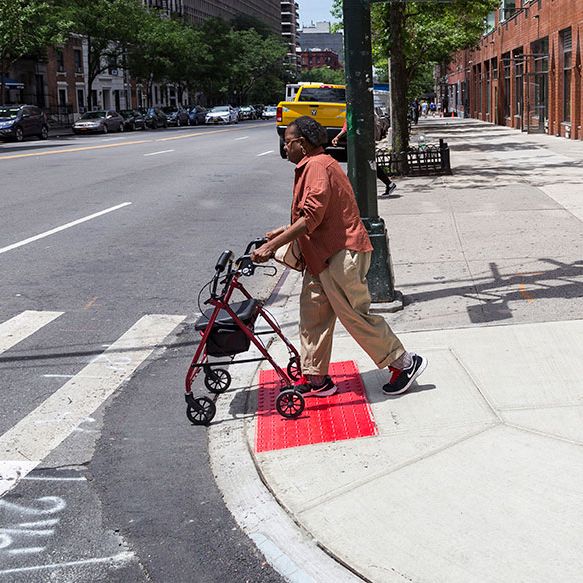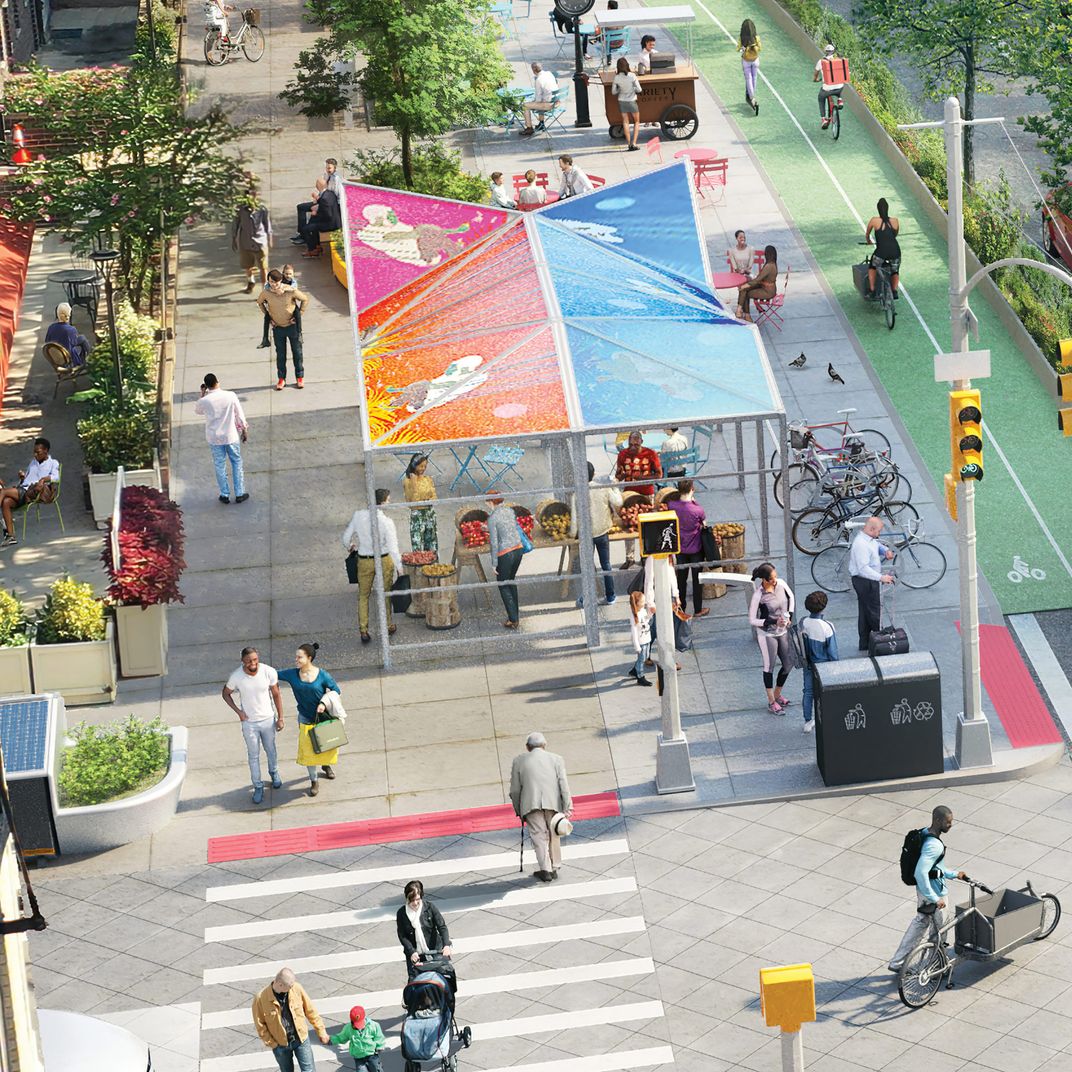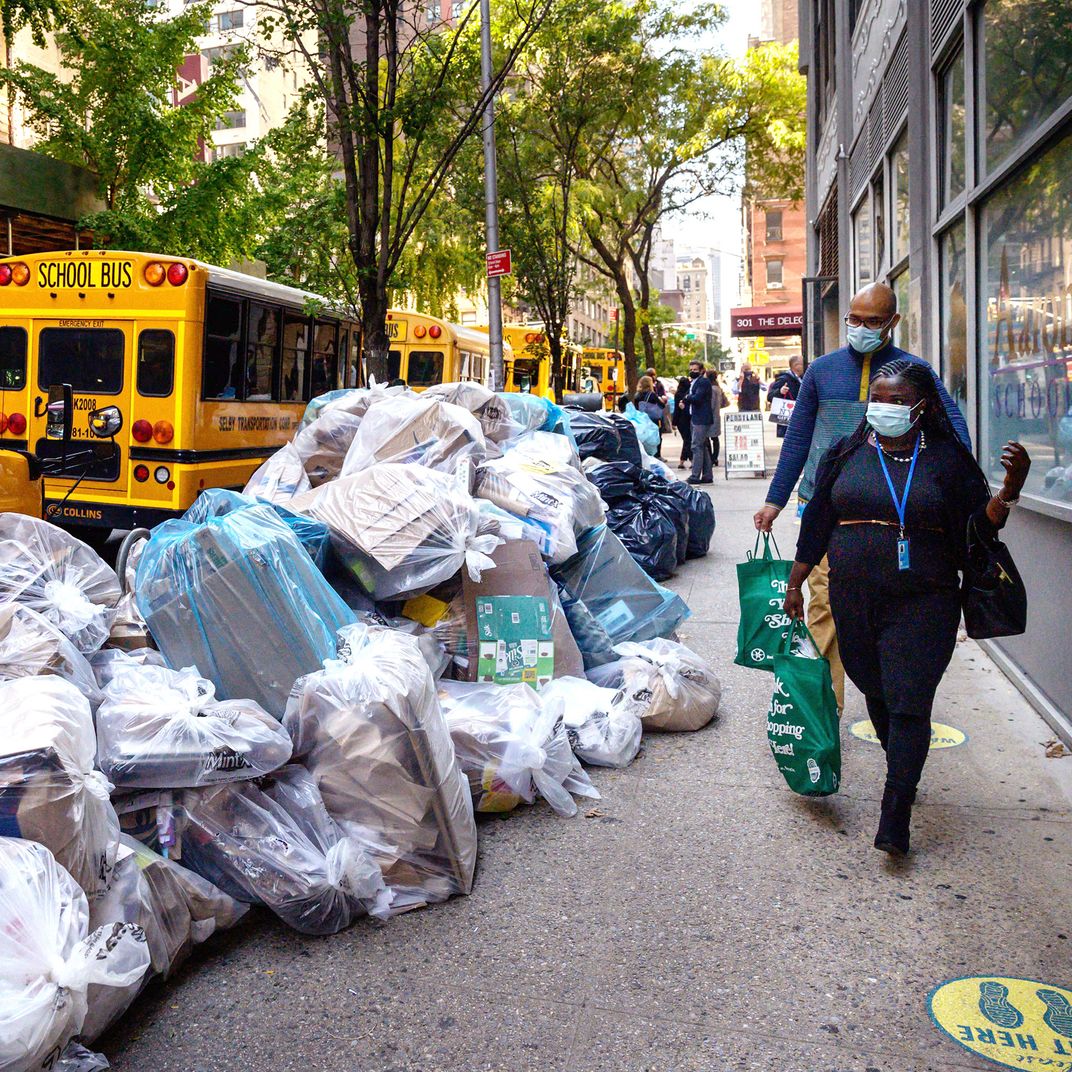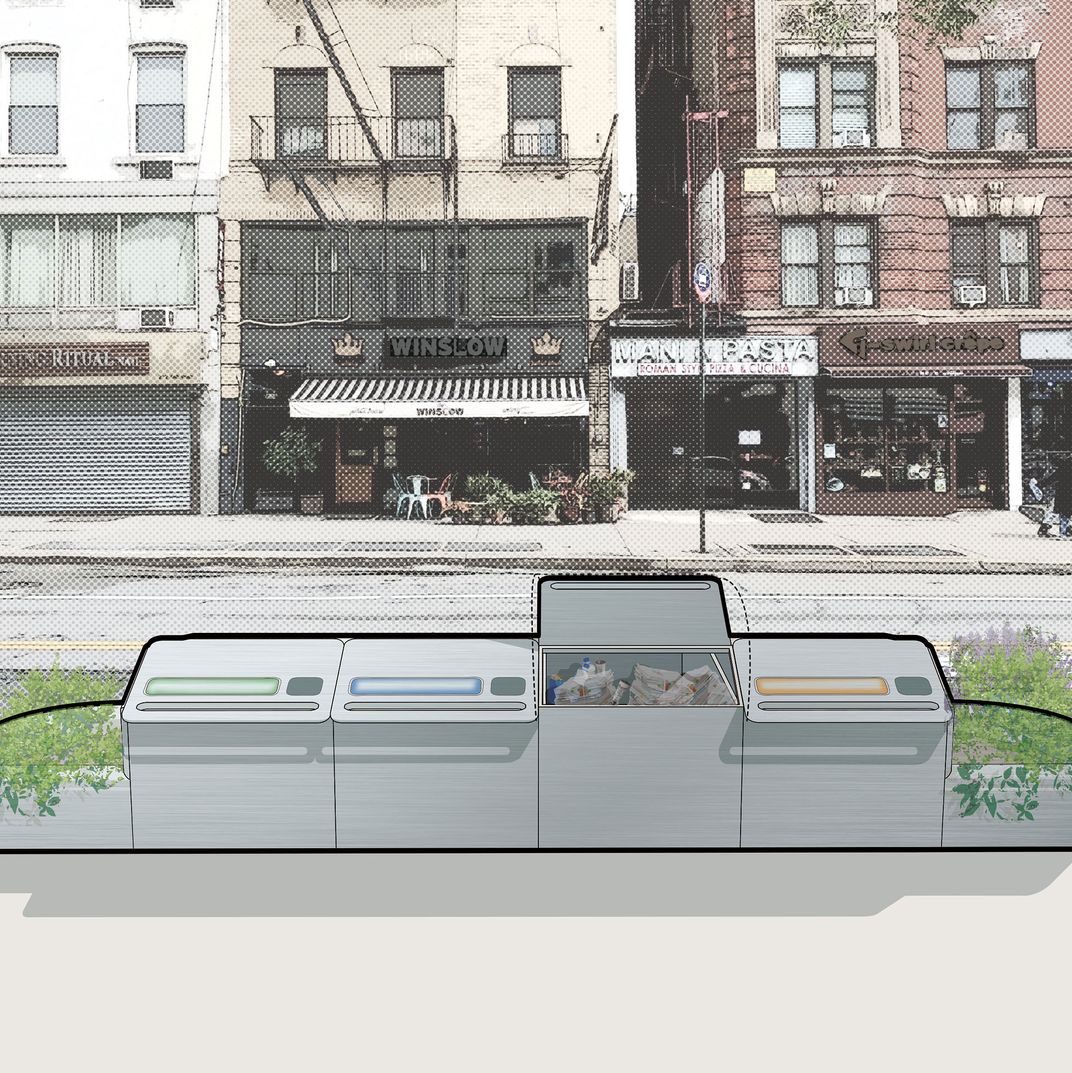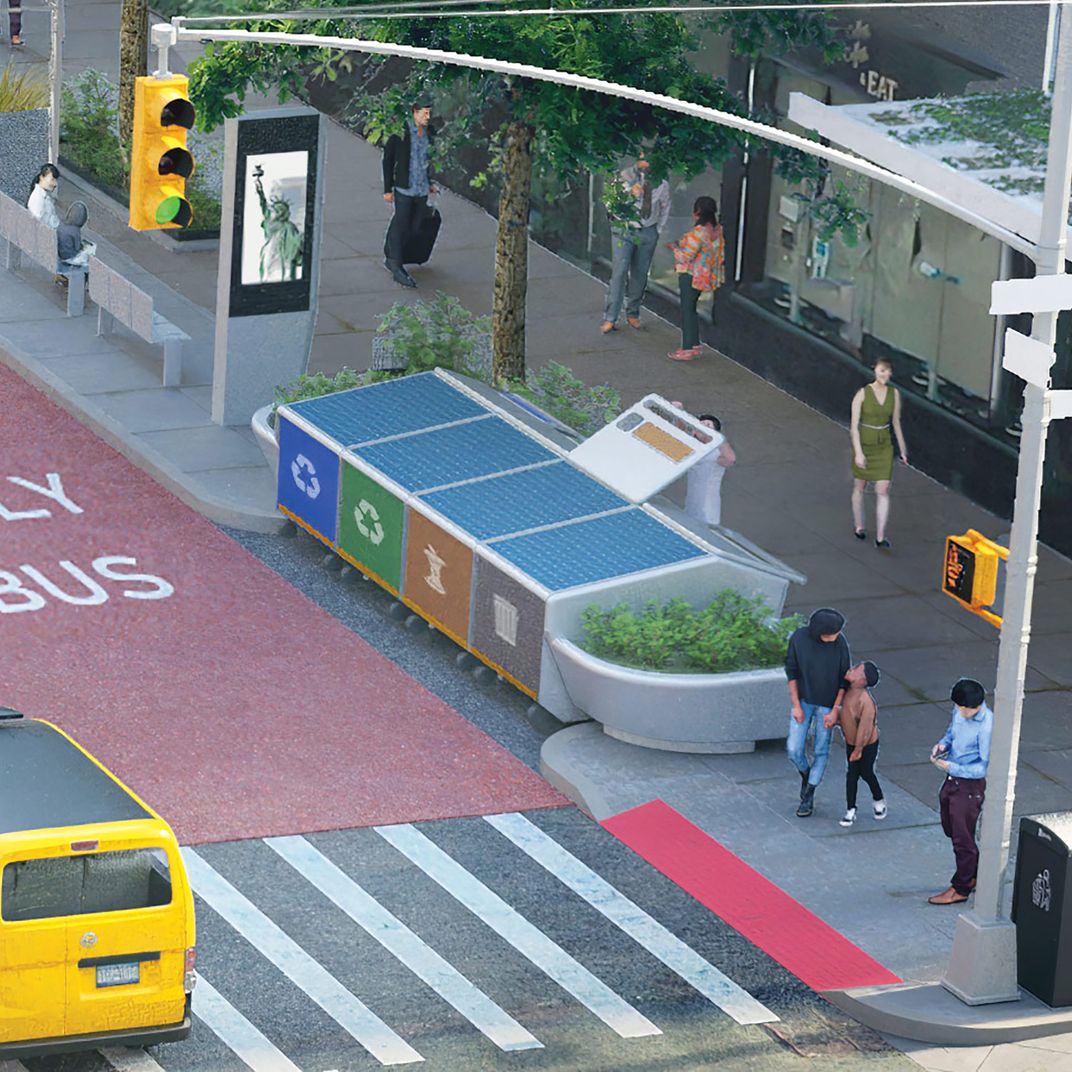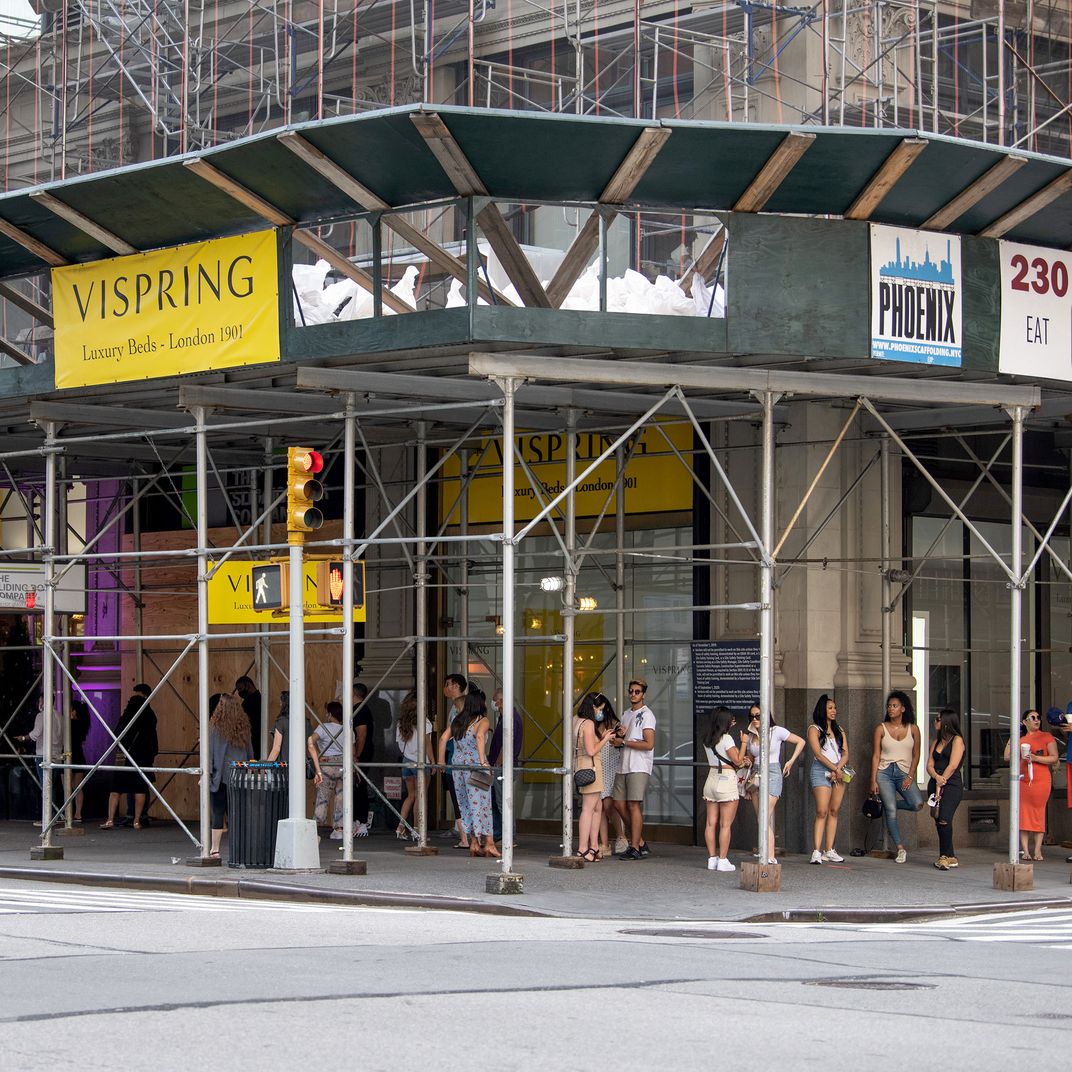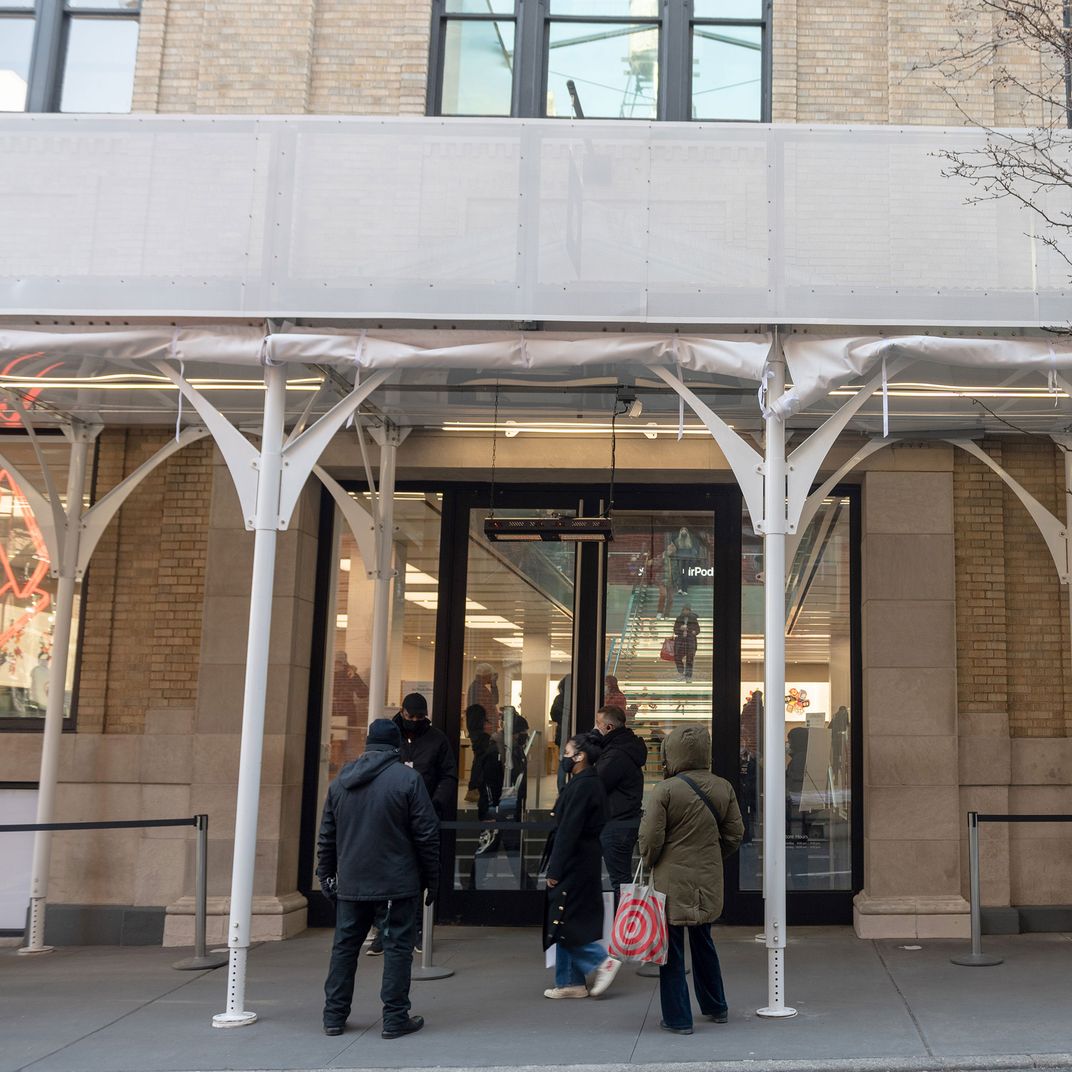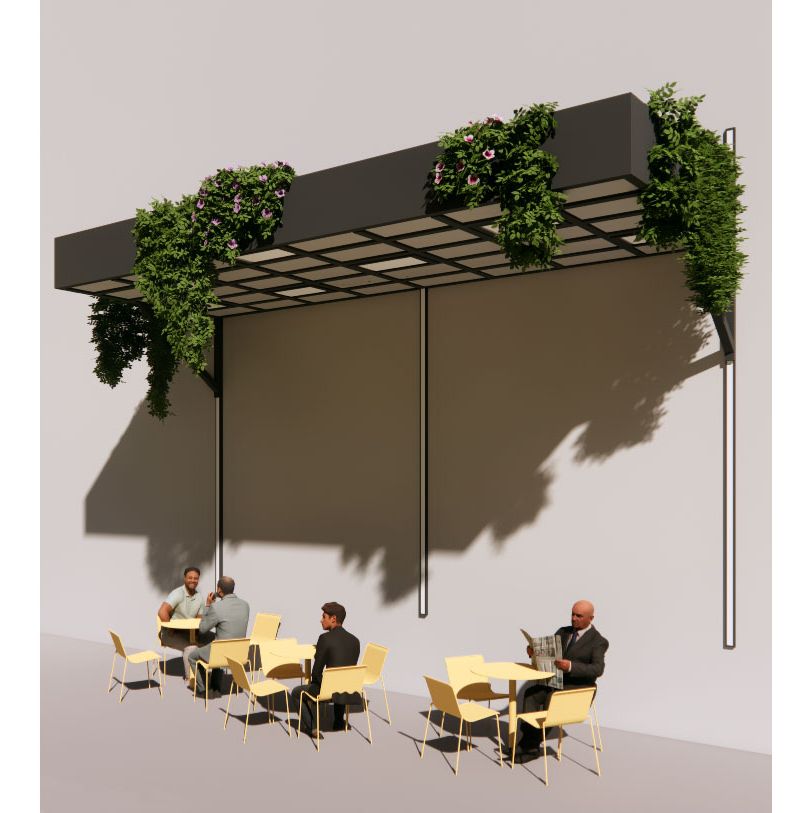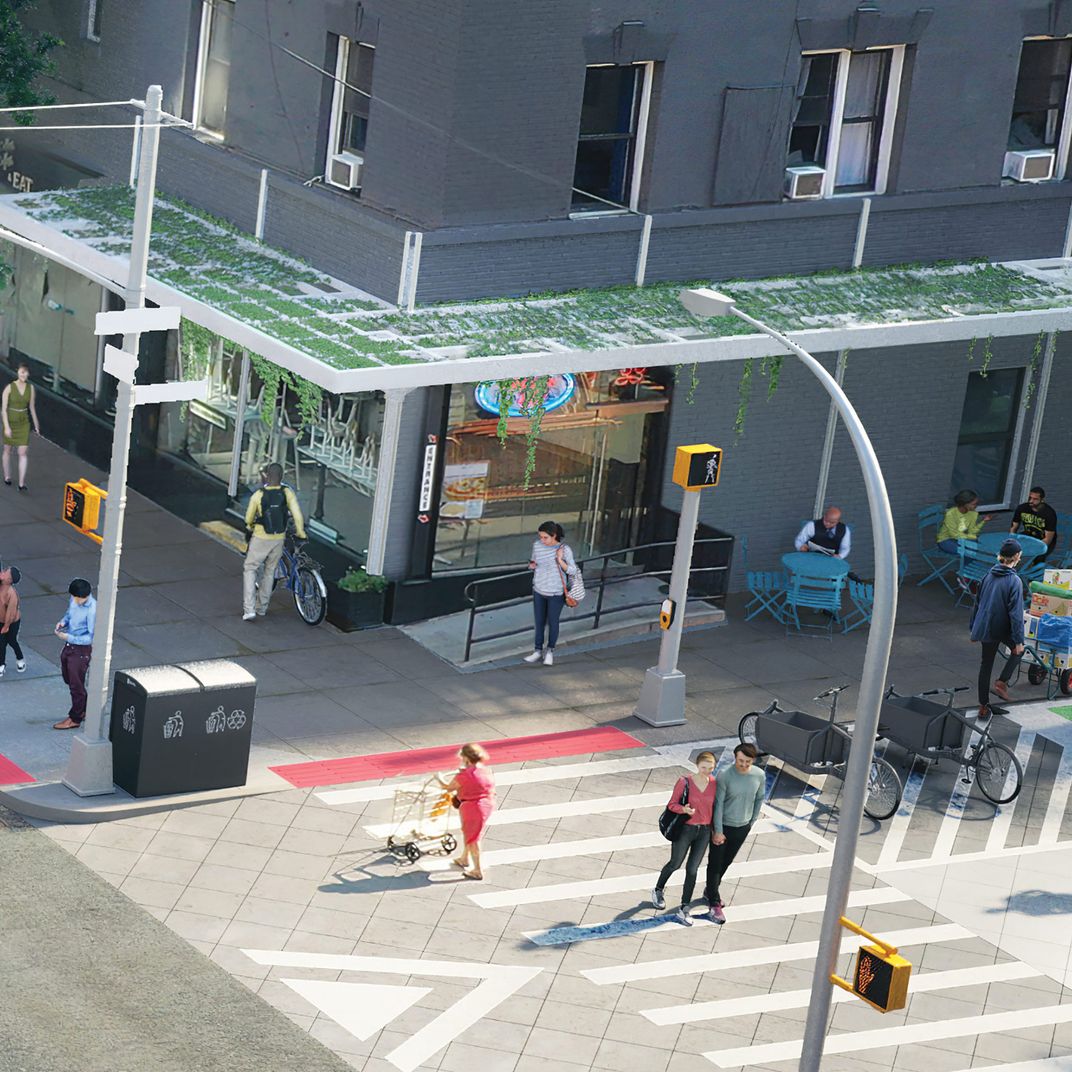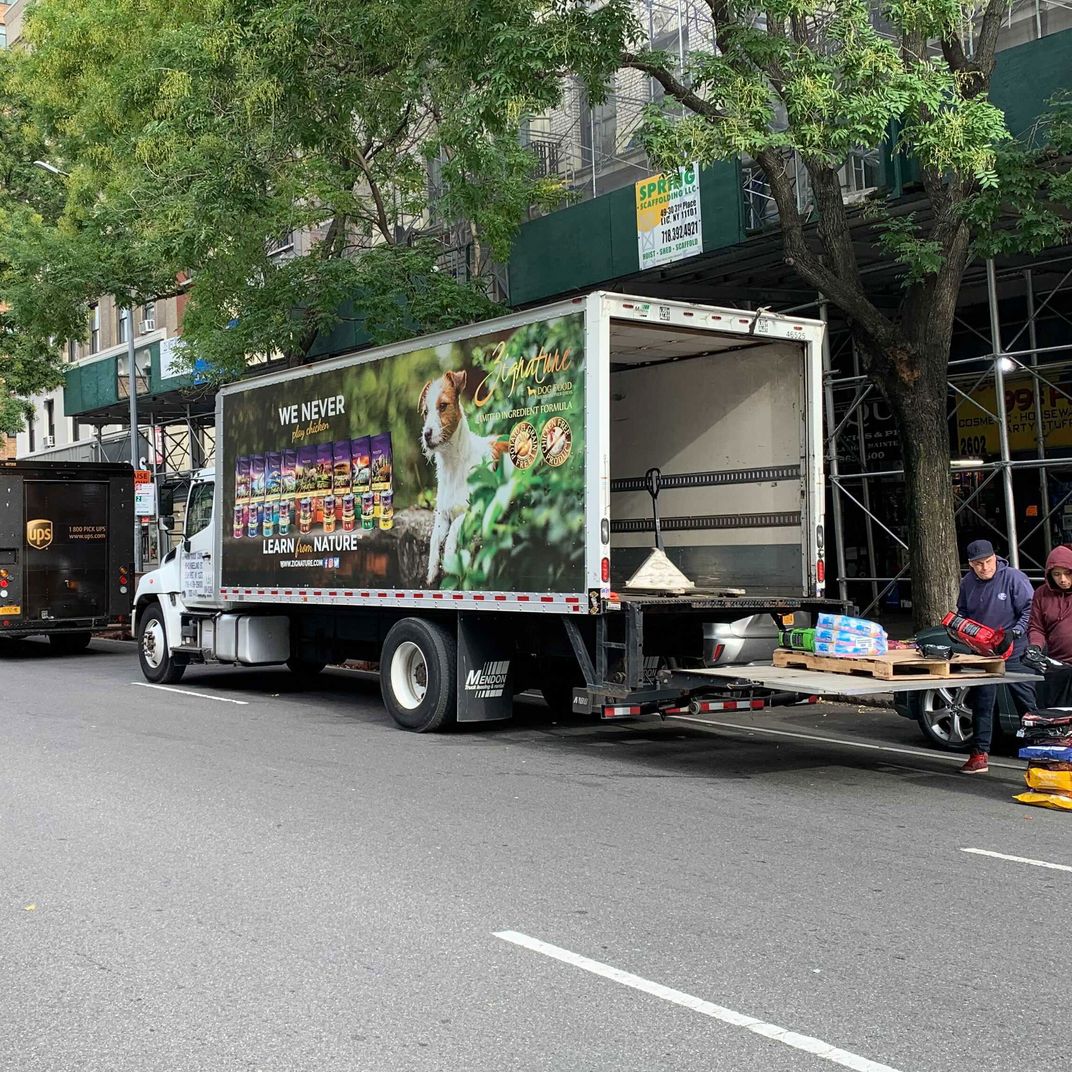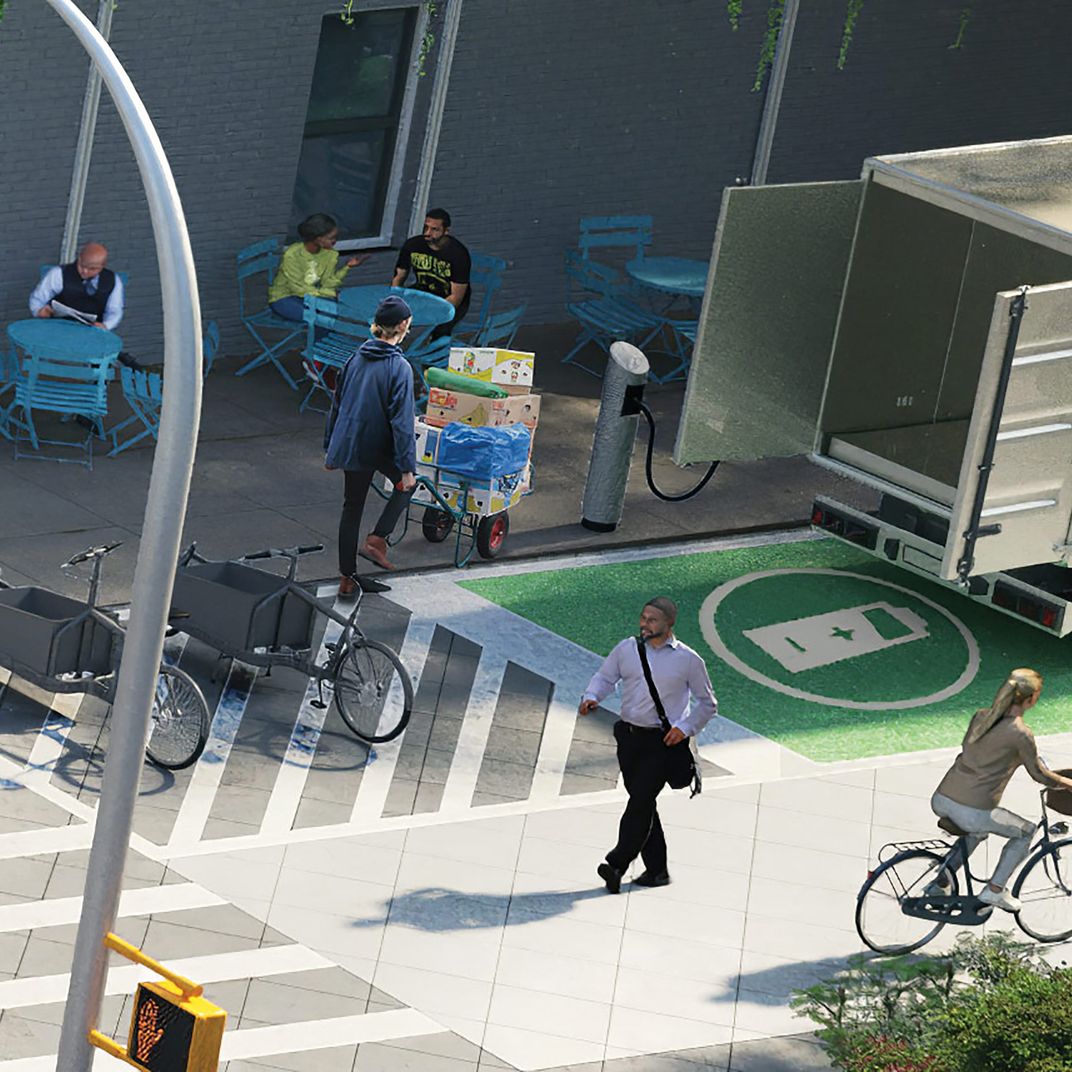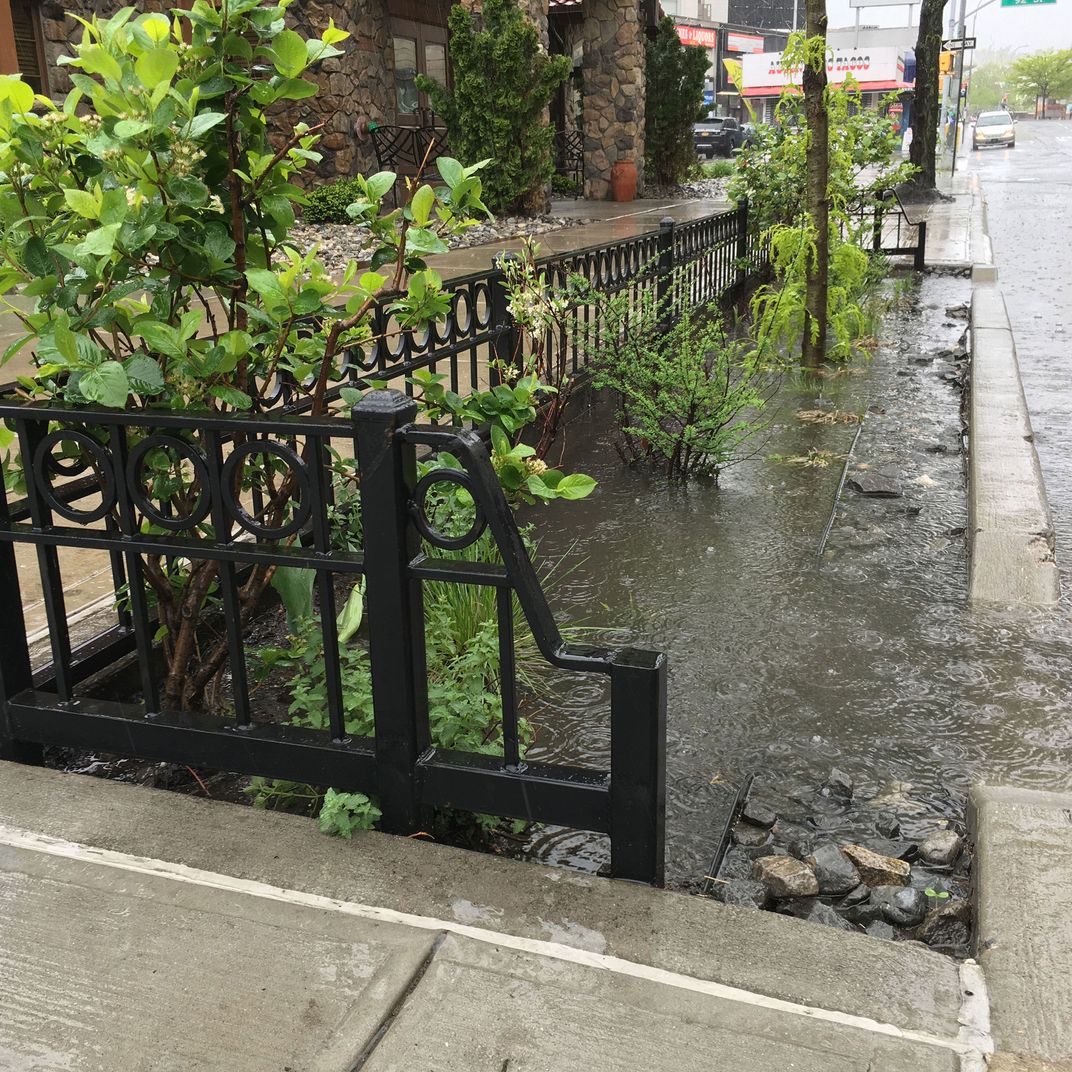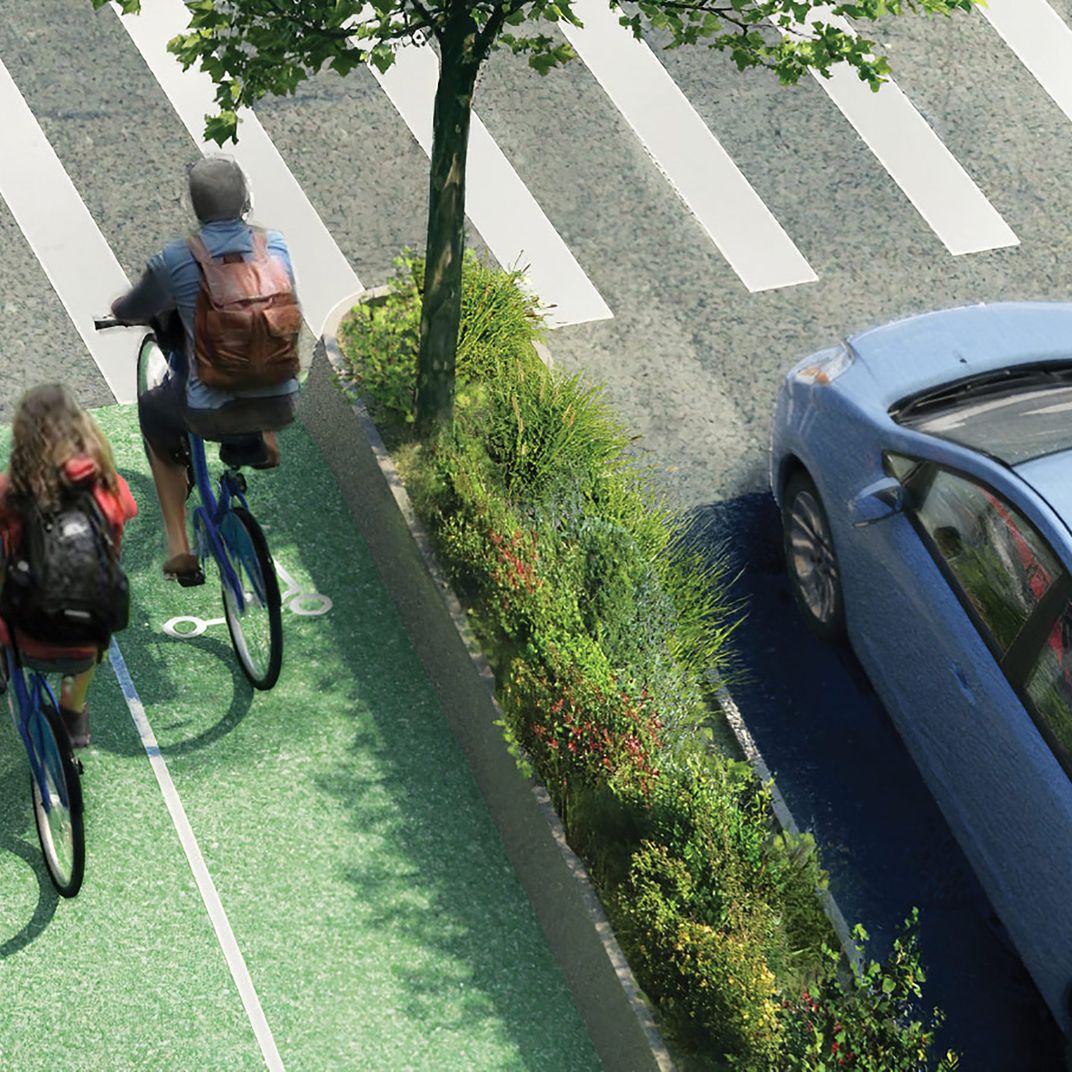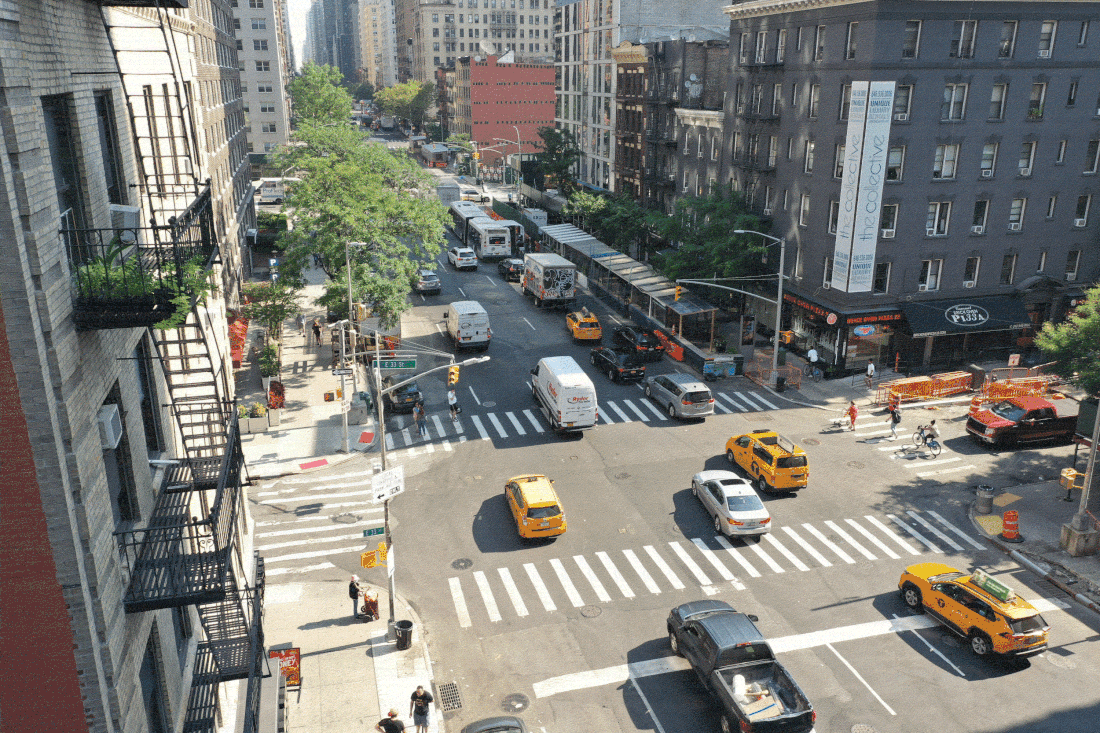
This article was featured in One Great Story, New York’s reading recommendation newsletter. Sign up here to get it nightly.
When automobiles first appeared on the streets of New York, quickly and decisively transforming the city into an early center of car culture, those streets bent to their needs. Sidewalks were narrowed to add lanes of traffic. Crossing the street, once an improvised sport of dodge-the-wagon played anywhere, was confined to corners and governed by lights. In the 1950s, the city converted miles of curbside into free overnight storage space for private vehicles. The result was that virtually every street and avenue became a river of moving steel, flanked by banks of immobile steel. We need to adapt again, this time to the long-obvious reality that cars are too plentiful, too big, too polluting, and too murderous to stampede a crowded city.
Streets are not givens but tools that we call into service for a dizzying array of unrelated purposes: to parade fashions; to exercise our bodies and our First Amendment rights; to sit, shop, eat, play chess, avoid infection, and socialize; to beat the drum for causes; to ferry supplies, handle stormwater, pile trash, facilitate surveillance, and provide staging grounds for construction. Tens of thousands of New Yorkers use streets as beds.
That interconnectedness can be hard to keep in mind. A kid riding against traffic speeds through a red light as you step off the curb; you shake your fist at bike lanes and gonzo scooterists. An SUV making a left turn crushes a child in a stroller, and we rail about reckless drivers. A restaurant’s fleet of e-bikes is chained to scaffolding, blocking a wheelchair user, and … well, we’re not quite sure what to curse. Rarely do we see these dysfunctions as products of a systemic problem. New York’s streets, fought over by hostile factions, have been patched up and banged together like an old Buick in Havana.
New York and Curbed recruited a team of designers and consultants, led by the architecture firm WXY, to approach the streets as a matrix of overlapping, interrelated networks. The allure of more humane cities has generated an entire library’s worth of plans and pilot projects, both top-down and grassroots, for areas like Downtown Brooklyn and Soho. A few years ago, a consortium of Harlem business and organizations collaborated on a plan to redesign East 125th Street. In 2019, the City Council passed a law requiring the Department of Transportation to develop a five-year citywide plan. But this torrent of good intentions and expertise has fragmented the issue further by producing more schemes to ignore, postpone, and gripe about. Most New Yorkers’ concerns are exquisitely parochial: The only time a Bronxite is likely to care about, say, the width of Soho’s sidewalks is if it makes parking there even worse.
So we tried to imagine what a comprehensive transformation would produce on a generic Manhattan block, to the extent that one exists. We chose Third Avenue between East 33rd and 34th Streets because of its concentration of terriblenesses and virtues. It is congested, dense, torn up, noisy, and lively. Lined by towers and tenements, plied by trucks and fed by tunnels, it’s a short walk from offices, hospitals, and trains. Yet we also embraced its frenzy. Our goal was not to impose the serenity of a provincial Dutch city or to streamline the block into anodyne efficiency. New York without friction wouldn’t be New York.
We aspired to pack all the measures we already knew we should be taking into one vivid frame. An aerial photograph became a platform on which to overlay a possible future city. The result is a real-life I Spy book, filled with details that accumulate into a livable, equitable, safer, and more pleasant place to live. This is no futuristic fantasy of self-sweeping sidewalks or robot-controlled Tesla taxis gliding up at the touch of an app. Instead, we imagined a makeover that could happen now, given urgency and determination. To execute it in permanent, handsome materials would be slow and expensive; a recent project to renovate a stretch of Atlantic Avenue in Brooklyn cost $2.2 million per block. But the DOT has already shown many times that some of this work can be achieved with paint, planters, and boulders. Getting the first draft done matters more than making it perfect and perennial.
Our efforts yielded two big lessons. The first is that every improvement is a trade-off. Protecting bus lanes with concrete barriers, for example, would keep cars out, but it would also keep limited-stop buses from passing local ones. Our street incorporates a possible set of compromises. The second is that even simple tweaks imply a far-reaching organizational overhaul. Enclosed trash bins would push the Department of Sanitation to update some of its trucks and pickup procedures. New regulations and speed limits mean enforcement, and thus money, manpower, and — most important — a sense of common purpose.
This transformation is utopian only if the city’s incoming leaders surrender to inertia. Many of these proposals are radical only in New York. Other cities — even big chaotic ones, like Barcelona and Paris — update their streets without losing their identities or going broke. When it comes to quality of life in the public realm, New York’s attitude should be competitive, not fatalistic. In the nine areas shown below, our team lays out where we as a city might direct all that energy.
Taming Traffic
Job One is to cut the number of private vehicles without letting the remaining drivers treat emptier streets like the open road, as they did during lockdown. Congestion pricing will help (if it ever gets rolled out), as would more robust enforcement. But diversifying the streets is mostly a design project whose principles are well known. The National Association of City Transportation Officials has published an extensive and detailed library of how-tos. (NACTO chair and former New York City transportation commissioner Janette Sadik-Khan consulted on our project.) Even so, a redesign is full of pitfalls. Keeping bikers, buses, pedestrians, and cars out of each other’s way, for example, makes it more challenging to hail a cab.
We envision drastically scaling back free parking and transferring large chunks of public real estate from cars to pedestrians, bikes, and transit.
Part of the goal is to reclaim the streets for the variety of uses that were once allowed to thrive there.
New York already has a few recent models for blocks where pedestrians enjoy primacy over cars and streets become true public spaces. One nearby stretch of East 25th Street, between Lexington and Third Avenues, lined by Baruch College buildings on both sides, is an example that could be replicated on cross streets all over Manhattan.
In addition to fattening the Third Avenue sidewalk, we’ve designated East 33rd Street as a pedestrian-priority street, accessible to local traffic (plus emergency vehicles and delivery trucks) but designed to make drivers feel like vaguely intrusive guests. In this vision, COVID-era “open streets” have evolved to become permanent and ubiquitous features of the cityscape.
We envision drastically scaling back free parking and transferring large chunks of public real estate from cars to pedestrians, bikes, and transit.
Part of the goal is to reclaim the streets for the variety of uses that were once allowed to thrive there.
New York already has a few recent models for blocks where pedestrians enjoy primacy over cars and streets become true public spaces. One nearby stretch of East 25th Street, between Lexington and Third Avenues, lined by Baruch College buildings on both sides, is an example that could be replicated on cross streets all over Manhattan.
In addition to fattening the Third Avenue sidewalk, we’ve designated East 33rd Street as a pedestrian-priority street, accessible to local traffic (plus emergency vehicles and delivery trucks) but designed to make drivers feel like vaguely intrusive guests. In this vision, COVID-era “open streets” have evolved to become permanent and ubiquitous features of the cityscape.
Bikes & Micromobility
Experience shows that people will move around a city in whatever way they find efficient and acceptably safe. In 1900, the choices were plentiful: horse, buggy, wagon, omnibus, elevated, walking, and bicycle, as well as that newfangled menace the automobile. Today, battery-powered one-person vehicles have once again multiplied the options to include hoverboards, scooters, e-bikes, and electric skateboards. Biking has been on the increase for years, and the pandemic gave that trend a boost, as it did in Paris and other cities around the world. New Yorkers can either curse that new reality, with its evolving assortment of personal transit gizmos, or we can redesign streets to accommodate it. Adaptation means layering the entire city with a weave of usable lanes — protected, well maintained, and clear of impediments — so that riders of all ages can get wherever they need to go, leisurely or in a hurry, expertly or hesitantly. The more welcoming the lanes, the more people use them, and the less hospitable they become to reckless wrong-way rocketeers.
Our original photo caught two Citi Bike riders encroaching on pedestrian territory, one on the crosswalk and another on the sidewalk. Infuriating as that is, it’s an understandable move when the choice is to maneuver through a tangle of buses, taxis, and box trucks.
Bicycles are not a new arrival on the streets of New York; in fact, they predate the car traffic that displaced them.
Properly designed and protected, micromobility lanes can handle more traffic than vehicular lanes can, for the simple reason that bikes take up less space. Giving lanes on the avenue a slight bend slows cars, creates more ample sidewalks, and creates a median for pickups and dropoffs.
A path wide enough for passing accommodates a variety of users, from sightseers on Citi Bikes to delivery workers hustling to keep you fed.
Anyone who regularly cycles around the city faces the problem of what to do with a bike when you’re not using it, especially when locking it to scaffolding or a street sign is both technically illegal and tempting for thieves. Seeding the city with lockable bike storage shelters, like those developed by the company Oonee, would help. Installed on wide sidewalks and near bike lanes, the pods would quickly fade into the streetscape.
Our original photo caught two Citi Bike riders encroaching on pedestrian territory, one on the crosswalk and another on the sidewalk. Infuriating as that is, it’s an understandable move when the choice is to maneuver through a tangle of buses, taxis, and box trucks.
Bicycles are not a new arrival on the streets of New York; in fact, they predate the car traffic that displaced them.
Properly designed and protected, micromobility lanes can handle more traffic than vehicular lanes can, for the simple reason that bikes take up less space. Giving lanes on the avenue a slight bend slows cars, creates more ample sidewalks, and creates a median for pickups and dropoffs.
A path wide enough for passing accommodates a variety of users, from sightseers on Citi Bikes to delivery workers hustling to keep you fed.
Anyone who regularly cycles around the city faces the problem of what to do with a bike when you’re not using it, especially when locking it to scaffolding or a street sign is both technically illegal and tempting for thieves. Seeding the city with lockable bike storage shelters, like those developed by the company Oonee, would help. Installed on wide sidewalks and near bike lanes, the pods would quickly fade into the streetscape.
Transit
Public buses, once the slouching diesel breathers that functioned as transit of last resort, have acquired fresh dignity. The new vehicles are cleaner, quieter, airier, and easier to board for those who are stymied by steps. At night or on Super Bowl Sunday, they even earn the description of rapid transit. But the city has shied away from defining their red-painted lanes with medians or barriers, which means that buses must navigate around cabs picking off fares, cops taking a break, armored cars refilling ATMs, and anyone else who feels immune from cameras and fines. Buses are slow because everyone else is.
Our original photo captured the everyday obstacle course that can slow public transit to the speed of a tranquilized sloth. A bus, stuck behind a box truck and squeezed by a construction fence, can only idle and hope that passengers can reach the door without getting hit by a cyclist who’s threading through traffic.
Cross streets can function differently, too — especially double-wide avenue-like throughways like 34th Street, which you can see at the top of the main image. We’ve sharpened the hierarchies of streets and separated their functions, so that you’ll choose different crosstown pathways, depending on whether you’re on a bus, in a car, or on foot. We also revived a failed Bloomberg-era plan to turn 34th Street into a river-to-river transitway, turning half the corridor’s width over to buses.
Third Avenue goes from a free-for-all conduit, where commercial vehicles, private cars, public buses, and garbage trucks weave around each other, to a more orderly arrangement. That intentionally leaves fewer lanes for cars, a move that rests on an observation that’s been made innumerable times over many decades: Wider roadways prompt more car trips, increasing congestion; narrower roadways do the opposite.
The goal of these changes is almost laughably modest: to help city buses become as convenient, quick, and predictable as they should have been all along. With the right support, they should run as smoothly as subways and trams do.
Our original photo captured the everyday obstacle course that can slow public transit to the speed of a tranquilized sloth. A bus, stuck behind a box truck and squeezed by a construction fence, can only idle and hope that passengers can reach the door without getting hit by a cyclist who’s threading through traffic.
Cross streets can function differently, too — especially double-wide avenue-like throughways like 34th Street, which you can see at the top of the main image. We’ve sharpened the hierarchies of streets and separated their functions, so that you’ll choose different crosstown pathways, depending on whether you’re on a bus, in a car, or on foot. We also revived a failed Bloomberg-era plan to turn 34th Street into a river-to-river transitway, turning half the corridor’s width over to buses.
Third Avenue goes from a free-for-all conduit, where commercial vehicles, private cars, public buses, and garbage trucks weave around each other, to a more orderly arrangement. That intentionally leaves fewer lanes for cars, a move that rests on an observation that’s been made innumerable times over many decades: Wider roadways prompt more car trips, increasing congestion; narrower roadways do the opposite.
The goal of these changes is almost laughably modest: to help city buses become as convenient, quick, and predictable as they should have been all along. With the right support, they should run as smoothly as subways and trams do.
Sidewalks
The sidewalk is a miraculous urban invention, a strip of stage lifted just high enough out of the grime and menace of traffic to protect pedestrians’ dignity as well as their limbs. But it’s one we abuse. New Yorkers are used to picking their way around garbage bags, scaffolding, restaurant tables, chained bikes, news boxes, disconnected fire alarm poles, open basement doors, piles of cartons being delivered to bodegas, and a thousand other impediments. For anyone who uses a wheelchair or is visually impaired, casual clutter can produce extreme frustration.
Wider sidewalks can help, but they can also exacerbate unpredictability. If you’re blind and travel with a guide dog, knowing exactly where the corner trash can lives is crucial. Audible signals on street lights compensate for the lack of aural clues from bikes and quiet cars. Tactile signals can prevent a pedestrian from crashing into a restaurant table.
It doesn’t take much to tip a lively sidewalk into becoming an impassable one.
Many corners around the city — but far from all — have already been fitted out with curb cuts and red textured panels that allow wheelchair users to cross and alert pedestrians with low vision to the transition from sidewalk to street. These should be standard at every intersection.
Widening pedestrian areas allows the sidewalk to have its own topography of uses. A through-passage keeps to the left, hugging the sides of buildings or the perimeter of restaurants.
The area closest to the street is more sedentary, with café tables, benches, a hot-dog (or arepa) stand, and a miniature green market. An angled railing leads people with low vision around to the left.
It doesn’t take much to tip a lively sidewalk into becoming an impassable one.
Many corners around the city — but far from all — have already been fitted out with curb cuts and red textured panels that allow wheelchair users to cross and alert pedestrians with low vision to the transition from sidewalk to street. These should be standard at every intersection.
Widening pedestrian areas allows the sidewalk to have its own topography of uses. A through-passage keeps to the left, hugging the sides of buildings or the perimeter of restaurants.
The area closest to the street is more sedentary, with café tables, benches, a hot-dog (or arepa) stand, and a miniature green market. An angled railing leads people with low vision around to the left.
Sanitation
New York’s habits of waste collection are simultaneously byzantine and primitive. Restaurants and stores contract with private companies that crisscross the city each night at sometimes lethal high speeds. City workers heave plastic bags and shake public trash cans into the back of trucks. Property owners keep the sidewalks clean and clear — or don’t.
The system relies on sidewalks as staging areas, creating a streetscape that only a rat (or a multitude of them) could love.
The architecture firm Marvel, in collaboration with Recycle Track Systems, Sam Schwartz, and HR&A, has designed an on-street container that residents or businesses can open with a fob and haulers can just winch into trucks. There’s a surveillance aspect to this technology: The smart box knows who’s recycling properly and who’s tossing soda cans in with the food waste. It also performs the modest technical feat of sending out an alert when it’s getting full.
In an ideally smooth future, a container in need of being emptied sends out an automated alert. The system adjusts scheduled rounds to ensure pick-up before the container is full; the closest free truck hoists it mechanically, emptying it in seconds. The result: fewer truck miles, lower emissions, and less time the garbage spends sitting around as a rat smorgasbord.
Marvel’s design is only the visible manifestation of what would be a massive organizational shift, boosting the proportion of trash that actually gets recycled. Right now that’s only about 20 percent.
The system relies on sidewalks as staging areas, creating a streetscape that only a rat (or a multitude of them) could love.
The architecture firm Marvel, in collaboration with Recycle Track Systems, Sam Schwartz, and HR&A, has designed an on-street container that residents or businesses can open with a fob and haulers can just winch into trucks. There’s a surveillance aspect to this technology: The smart box knows who’s recycling properly and who’s tossing soda cans in with the food waste. It also performs the modest technical feat of sending out an alert when it’s getting full.
In an ideally smooth future, a container in need of being emptied sends out an automated alert. The system adjusts scheduled rounds to ensure pick-up before the container is full; the closest free truck hoists it mechanically, emptying it in seconds. The result: fewer truck miles, lower emissions, and less time the garbage spends sitting around as a rat smorgasbord.
Marvel’s design is only the visible manifestation of what would be a massive organizational shift, boosting the proportion of trash that actually gets recycled. Right now that’s only about 20 percent.
Scaffolding and Sidewalk Bridges
One of New York’s distinctive banes is a streetscape jammed with steel pipes supporting plywood platforms, the main purpose of which is to catch debris that might fall from a neglected building or construction site.
Local Law 11, which effectively mandates these sidewalk bridges, isn’t going anywhere, but it doesn’t need to have such a perpetual or obnoxious effect.
One attempt to prettify the solution is the Urban Umbrella, a more highly designed and slightly less encumbering version of the standard.
WXY’s design takes a different approach, especially for buildings where a bridge will be needed for more than a couple of months. The sidewalk trellis gets bolted to the building itself, providing shelter from rain as well as from falling bricks, without cluttering the sidewalk.
When installed, it looks like an intentional and even decorative canopy.
Local Law 11, which effectively mandates these sidewalk bridges, isn’t going anywhere, but it doesn’t need to have such a perpetual or obnoxious effect.
One attempt to prettify the solution is the Urban Umbrella, a more highly designed and slightly less encumbering version of the standard.
WXY’s design takes a different approach, especially for buildings where a bridge will be needed for more than a couple of months. The sidewalk trellis gets bolted to the building itself, providing shelter from rain as well as from falling bricks, without cluttering the sidewalk.
When installed, it looks like an intentional and even decorative canopy.
Deliveries
The growth of online shopping and Grubhub dining is an agoraphobe’s delight, but the constant flow of deliveries has turned the competition for a stretch of curb into a contact sport.
Trucks double- and triple-park, often treating passersby to a sustained dose of din and carbon monoxide.
In peak seasons, crews set up big folding tables at the curb so they can sort packages. But not every truck needs to be able to pull up in front of every address at any hour.
The city can ration access to the curb and at the same time smooth the flow of goods. In our model, each (ideally, electric) truck pulls up to a reserved slot in a designated delivery zone and a squad of cargo bikes stands by to distribute the goods across the neighborhood.
You’d still get the handwarmers you ordered at midnight delivered by the next afternoon: One European study suggested that cargo bikes get the job done faster than vans. A similar Seattle pilot program looks promising, too.
Trucks double- and triple-park, often treating passersby to a sustained dose of din and carbon monoxide.
In peak seasons, crews set up big folding tables at the curb so they can sort packages. But not every truck needs to be able to pull up in front of every address at any hour.
The city can ration access to the curb and at the same time smooth the flow of goods. In our model, each (ideally, electric) truck pulls up to a reserved slot in a designated delivery zone and a squad of cargo bikes stands by to distribute the goods across the neighborhood.
You’d still get the handwarmers you ordered at midnight delivered by the next afternoon: One European study suggested that cargo bikes get the job done faster than vans. A similar Seattle pilot program looks promising, too.
Floods
In normal weather — the kind that’s becoming ever rarer — rain glides across waterproof asphalt and into a catch basin before flowing into a sewer. But in the coming years we’ll have to cope with more wet assaults from air (like Hurricane Ida) or sea (like Sandy). That’s when the streets become deadly.
In massive downpours, the streets become flood accelerators, funneling water into depressions, swamping buses, and driving debris into drains and clogging them.
But streets can be pressed into service to solve the problem they’ve helped create by increasing the proportion of spongy surfaces. The city already has a green infrastructure program that has installed nearly 11,000 rain gardens in the last several years, mostly in areas that help divert flooding from put-upon sewers. That effort needs to be turbocharged, though, so that green infrastructure becomes standard equipment.
Swales, tree pits, and planted medians all soak up water and release it slowly, so it can be managed by the sewers.
A low-traffic street can even be resurfaced (so long as a neighborhood organization signs on to maintain it every so often) with permeable pavers or porous asphalt, which allows water to seep through the surface into the ground.
In massive downpours, the streets become flood accelerators, funneling water into depressions, swamping buses, and driving debris into drains and clogging them.
But streets can be pressed into service to solve the problem they’ve helped create by increasing the proportion of spongy surfaces. The city already has a green infrastructure program that has installed nearly 11,000 rain gardens in the last several years, mostly in areas that help divert flooding from put-upon sewers. That effort needs to be turbocharged, though, so that green infrastructure becomes standard equipment.
Swales, tree pits, and planted medians all soak up water and release it slowly, so it can be managed by the sewers.
A low-traffic street can even be resurfaced (so long as a neighborhood organization signs on to maintain it every so often) with permeable pavers or porous asphalt, which allows water to seep through the surface into the ground.
Restaurants
The pandemic gave New York an outdoor café culture that could fade away again unless it’s built into the streetscape. The drawbacks are clear: shoddy construction with flapping plastic panels to keep out the wind, structures that get in the way of snowplows, dining areas that straddle bike lanes, tables that interfere with pedestrian traffic, restaurants that colonize more free public space than they’re entitled to. But the worth of outdoor restaurants shouldn’t be reckoned in isolation: it’s not just about whether to eat outdoors, but about how they enrich the public realm, and how they interact with all the other claims on the real estate that all New Yorkers share.
